Our final day in Edinburgh consisted of visits to Edinburgh Castle (and the one o’clock gun), The Royal Mile, St. Giles’ Cathedral, Calton Hill, Grassmarket, Greyfriars Kirkyard, Victoria Street, and The Real Mary King’s Close.
We had a very lazy morning, so our first goal was to be at Edinburgh Castle in time for the one o’clock gun. We made it! (Gosh, I would hope so!!)
This is – once again – a post with a lot of back story. Feel free to skip what doesn’t interest you!
We passed by St. Mary’s Episcopal Cathedral in Edinburgh (I no longer remember where, but it was shortly before we visited the castle) but only from the outside. It is a beautiful building! It opened in 1879. The cathedral is one of only three in the United Kingdom that feature three spires, the other two being Lichfield and Truro cathedrals.
Fun facts: St Mary’s Cathedral was the first cathedral in Great Britain to employ girls in the treble line as well as boys, in 1978. In 2005, St Mary’s Cathedral became the first cathedral in the Anglican tradition to have a female alto singing in daily services. (I am just going to say what you are already thinking: it took long enough!)
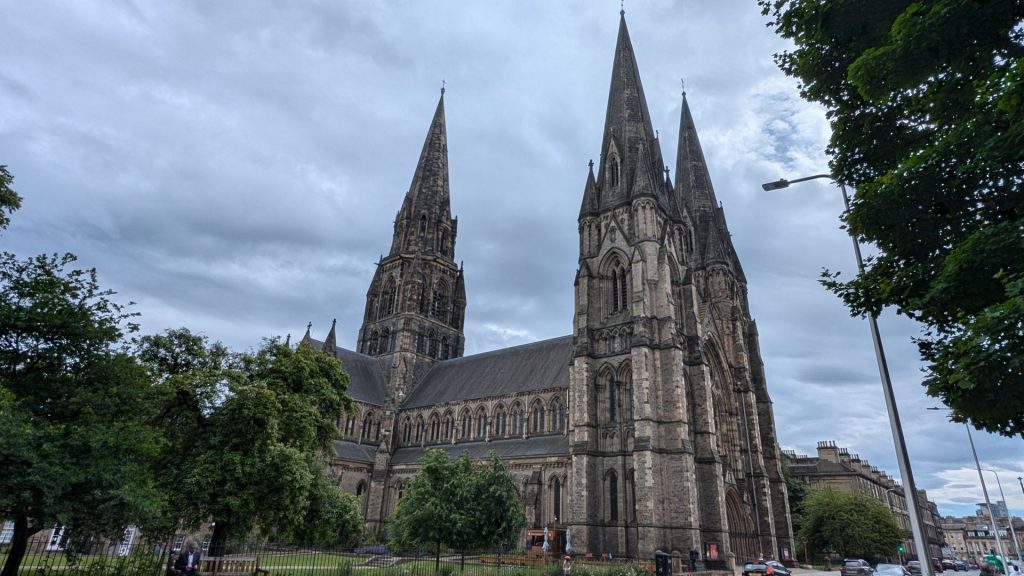
The One O’clock Gun at Edinburgh Castle is a tradition that dates back to 1861. Every day (except Sundays) at precisely 1:00 pm, a gun is fired from the Castle grounds. So precisely and so loud that the ships in the Firth of Forth and Leith Harbor two miles away used to set their clocks by it. Locals say that you can always tell visitors from the Edinburgh natives when the gun goes off. Whereas locals tend to check their watches, visitors jump out of their skins!
It was fired at precisely one o’clock and I confirmed that the time on my phone was correct. Here is Edinburgh Castle. As per usual, it is located on a hill.
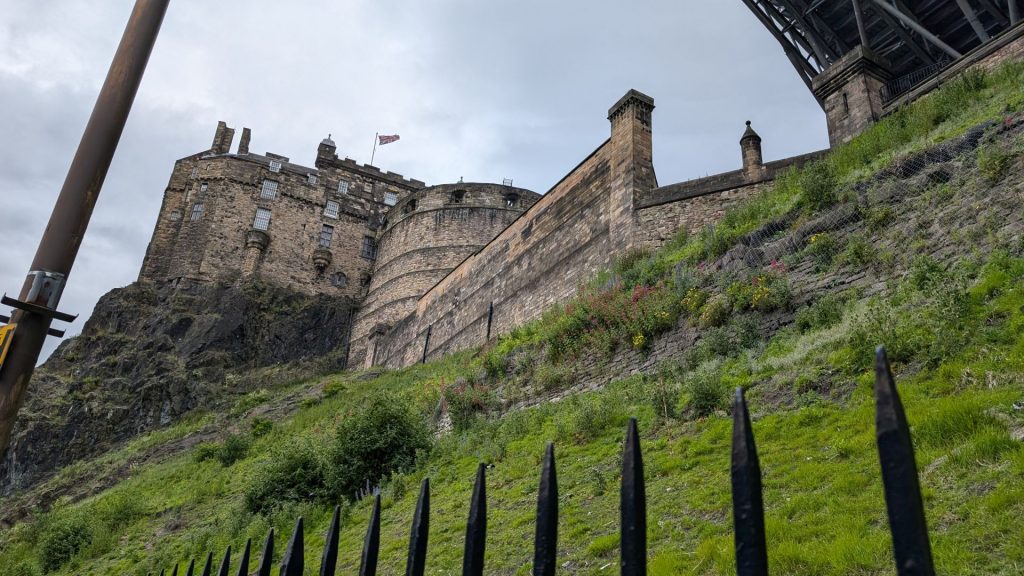
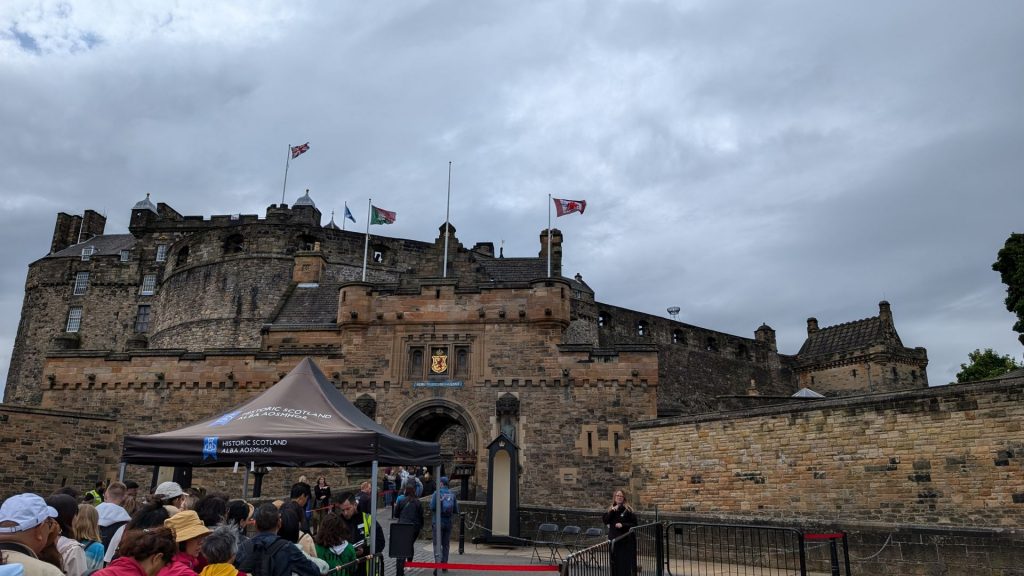
We were surprised to see massive bleachers right outside of the castle. We learned that they are there about four months in the summer: The bleachers, or grandstand, are set up each year for the Royal Edinburgh Military Tattoo in August. The grandstand is a modern engineering feat that takes about seven weeks to construct. The grandstand is also used for concerts, and has hosted performances by The Who, Rod Stewart, and The Lumineers.
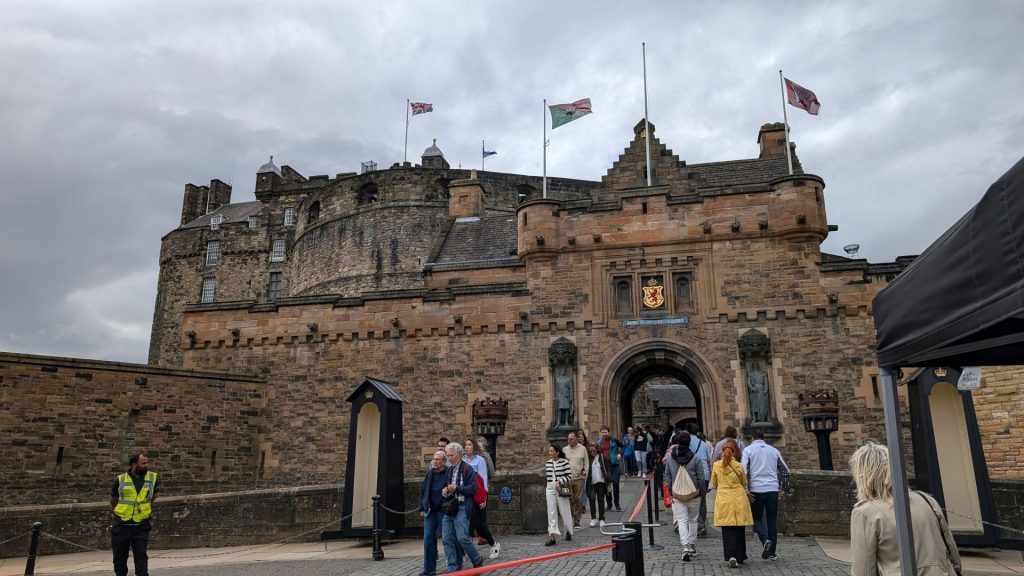
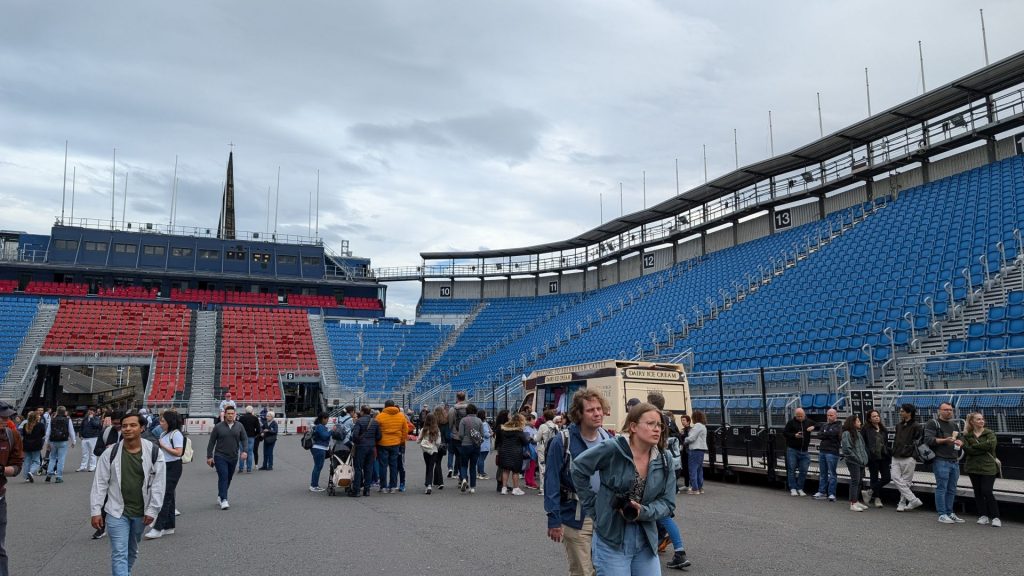
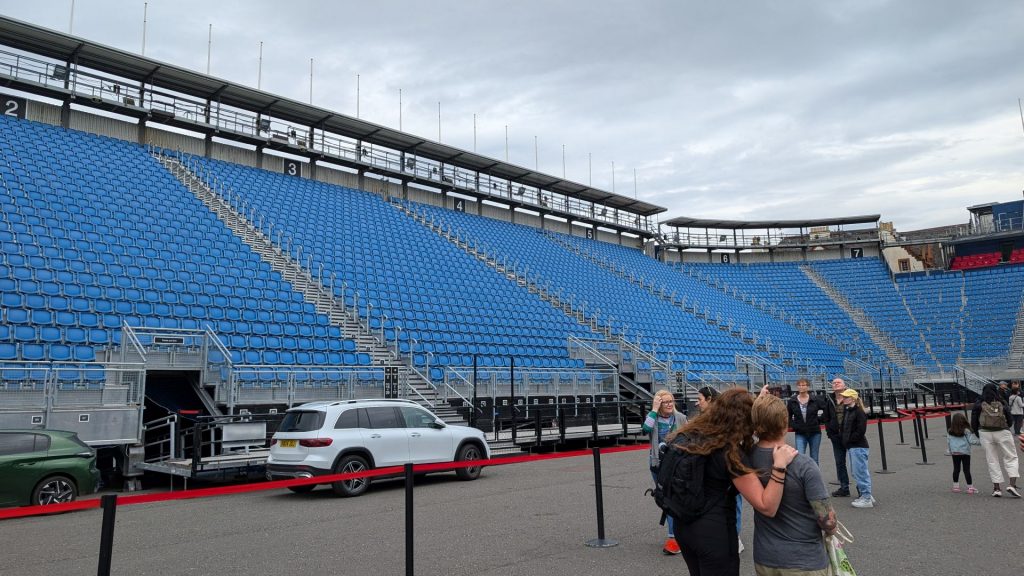
We had already decided to skip the interior, so we left the Castle and proceeded down the Royal Mile. The Royal Mile is a series of streets forming the main thoroughfare of the Old Town of Edinburgh. It connects Edinburgh Castle on the hill with the Palace of Holyroodhouse. Its total length is 1.81 km which is approximately one Scots mile long (1.814 m). The Scots mile was about 10% longer than the English mile, and was defined as the length of Edinburgh’s Royal Mile. It was made up of 320 falls, each 18 Scots feet long. The Scots mile was legally abolished three times: in 1685 by the Scottish Parliament, in 1707 by the Treaty of Union with England, and in 1824 by the Weights and Measures Act. (I find this to be humorous – it just wouldn’t die!) It was still used as a customary unit through the 18th century, but was obsolete by the time it was finally abolished.
The “Royal” part of the name comes from its tradition as a processional route for kings and queens.
Since the Royal Mile is rather long, there are many things to see, such as St Giles’ Cathedral. Founded in 1124 by King David I, it has been a working church for about 900 years. A backdrop to Scotland’s turbulent religious history, it has seen the seeds of civil war sown and been John Knox’s parish church during the Reformation. It is still an important center for civic services such as the Kirking of the Parliament and services for Most Ancient and Most Noble Order of the Thistle. (Kirking is a Scottish tradition that involves the blessing of a family’s tartan, or plaid, in a church. The word “kirking” comes from the Scottish Gaelic word kirk, which means “church.”)
A statue of Walter Francis Montagu Douglas Scott stands outside of the cathedral. He was the 5th Duke of Buccleuch, 7th Duke of Queensberry KG, PC (November 25, 1806 – April 16, 1884) and a British politician and nobleman.
He was only thirteen when he succeeded his father to the Dukedoms of Buccleuch and Queensberry in 1819. He inherited 460,000 acres, including 254,000 acres in Dumfries, 104,000 acres in Roxburgh and 60,000 acres in Selkirk.
He was particularly remembered for building Granton Harbour on the Firth of Forth. This cost more than £500,000 and was located within the estate of one of his houses, Caroline Park in northern Edinburgh. His statue was built in front of St. Giles Kirk in Edinburgh in memory of this act. The Duke was also one of the first to import Labrador dogs from Canada in the 1830s. (I find this last achievement to be quite commendable.)
It is time to see some pictures of this stuff!
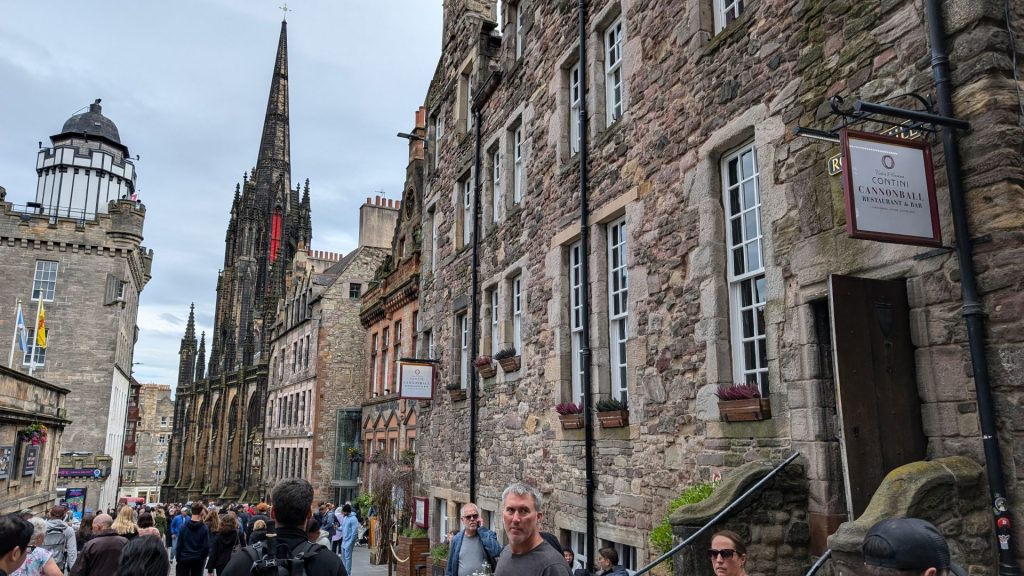
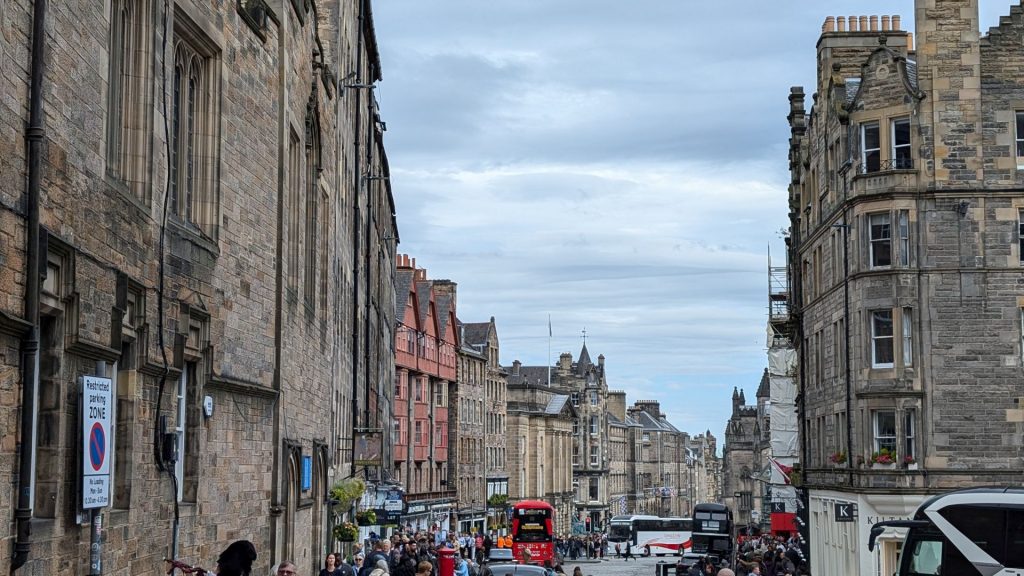
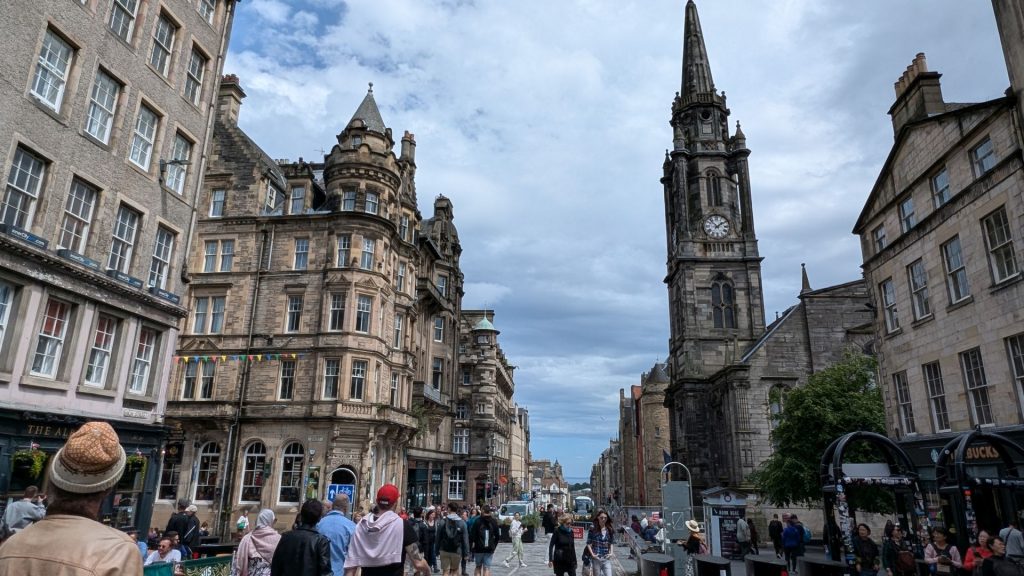
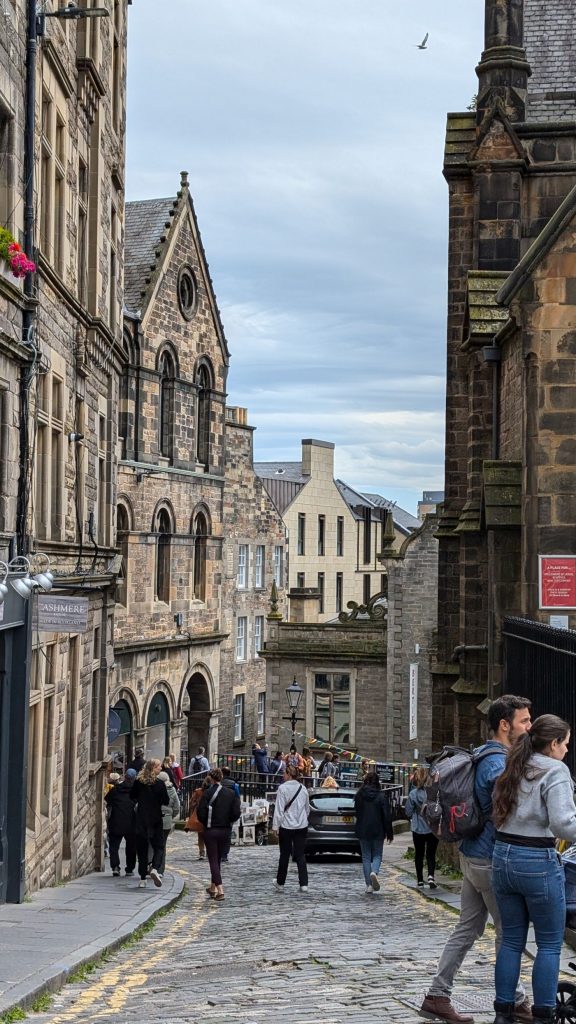
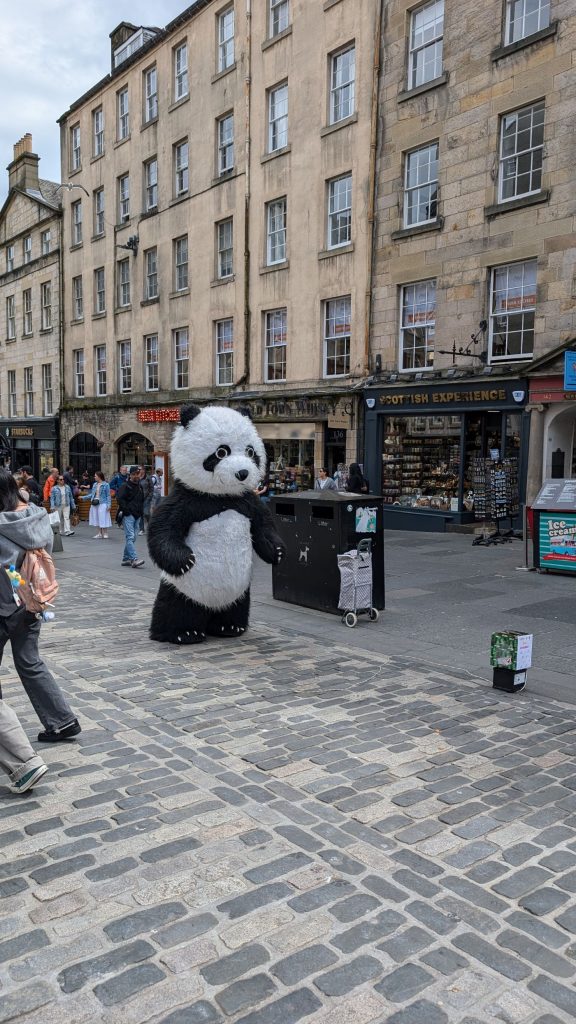
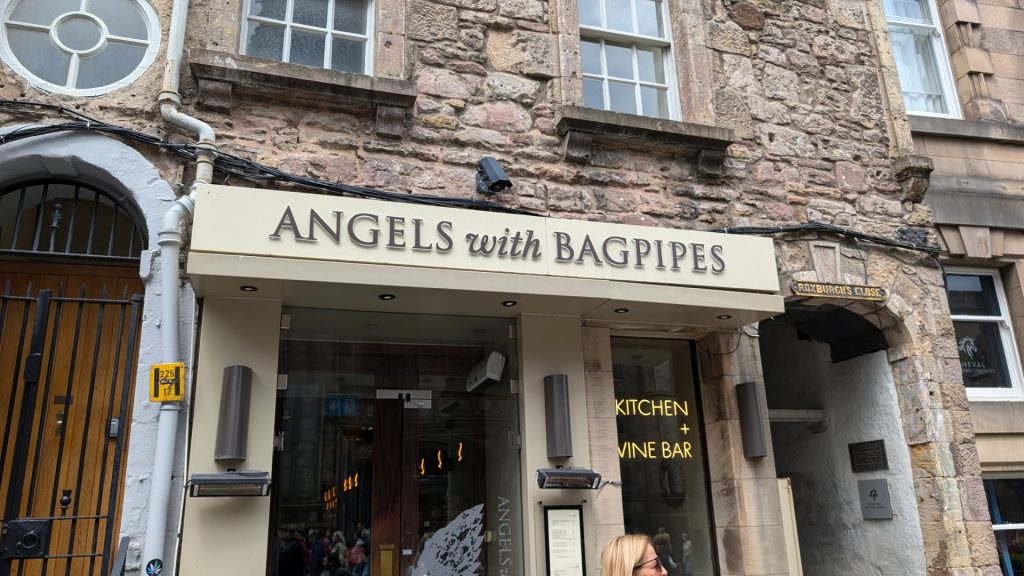
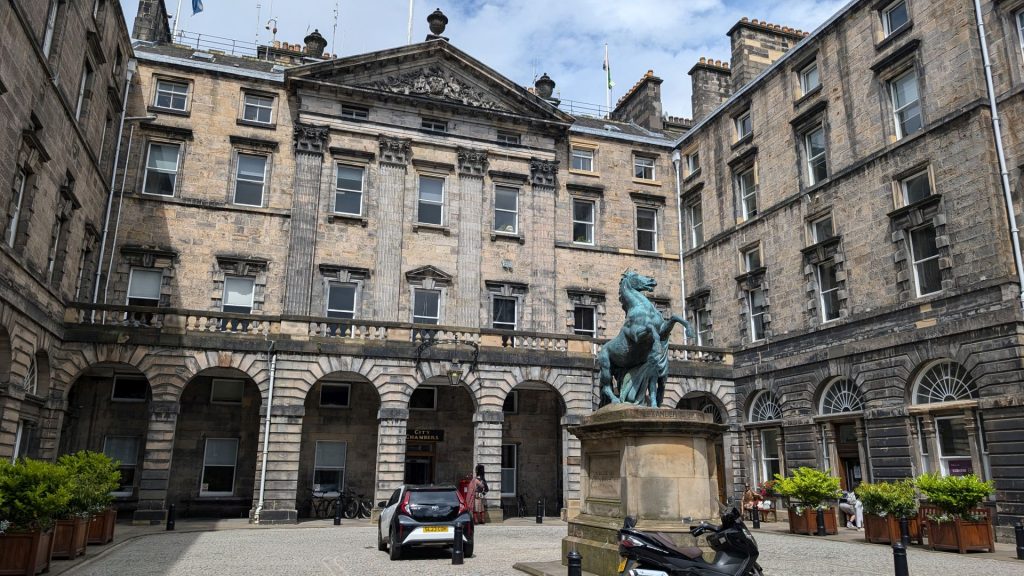
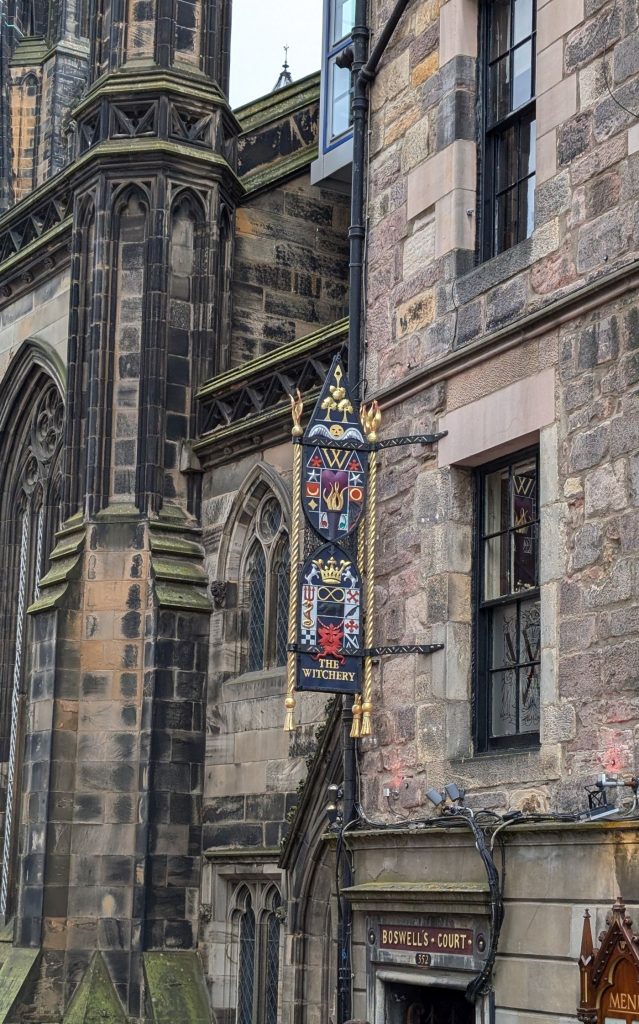
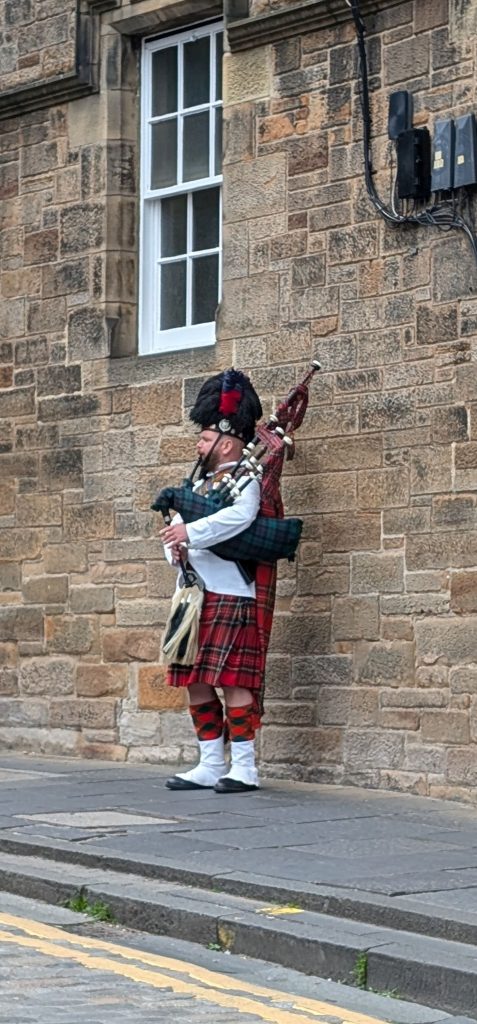
And these absolutely stunning and sexy pictures of us!
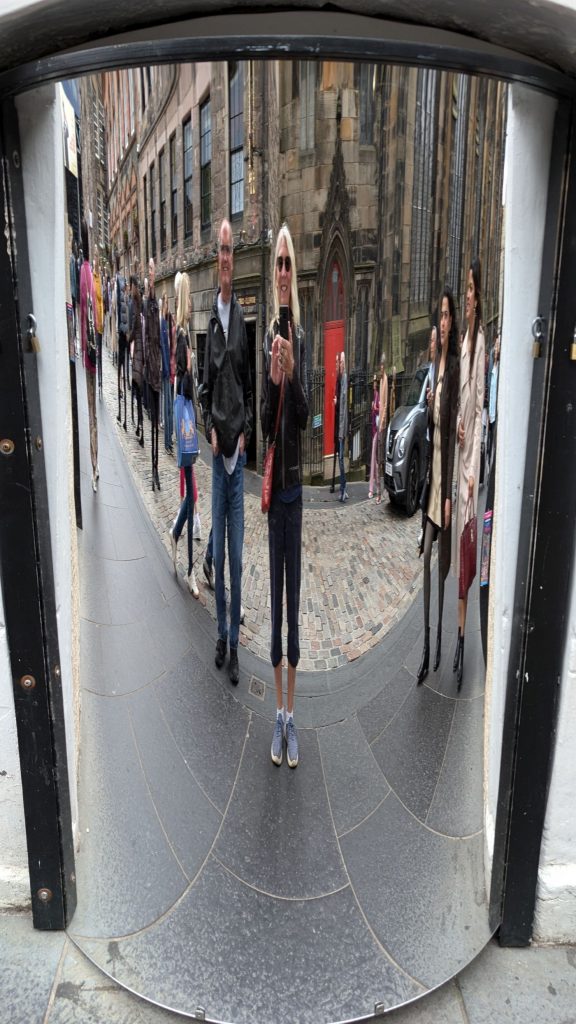
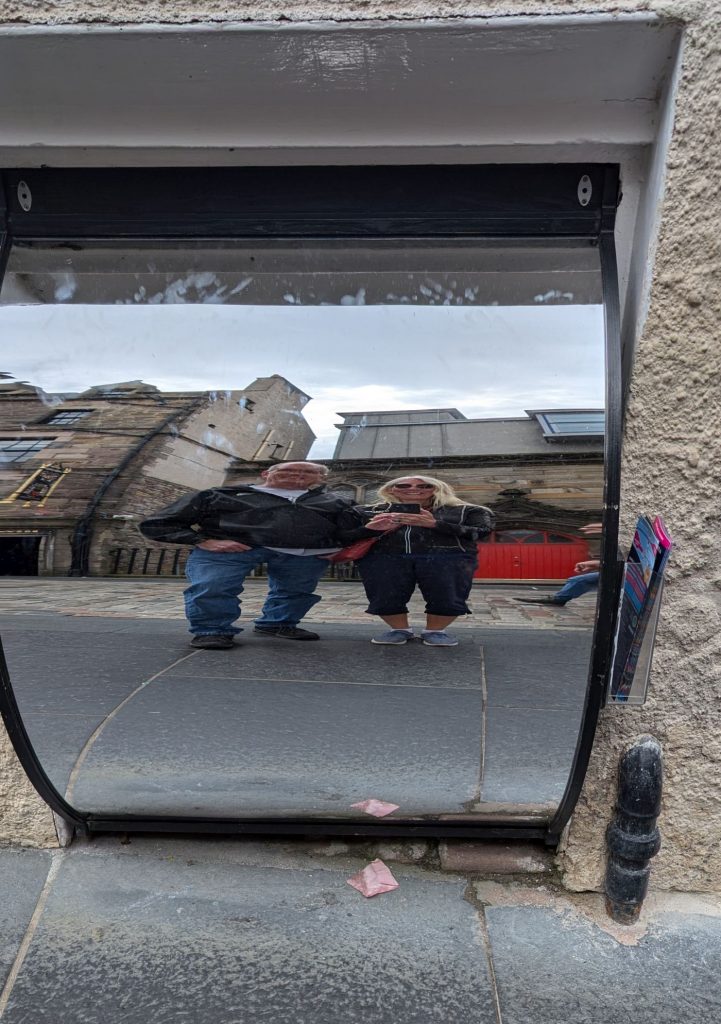
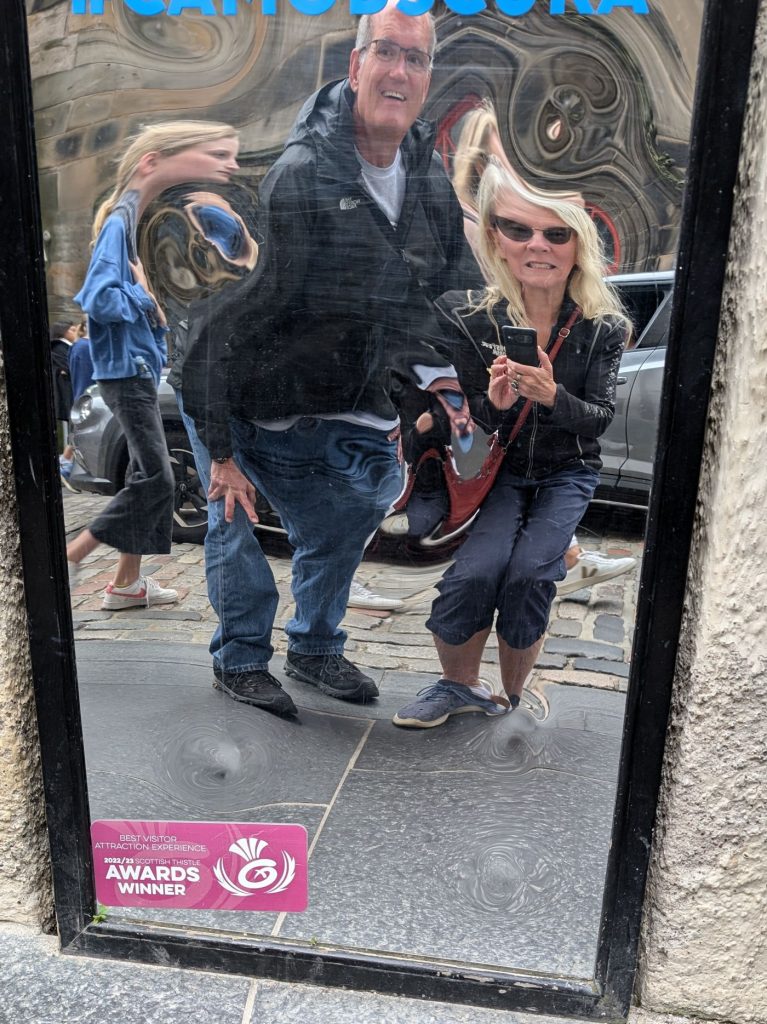
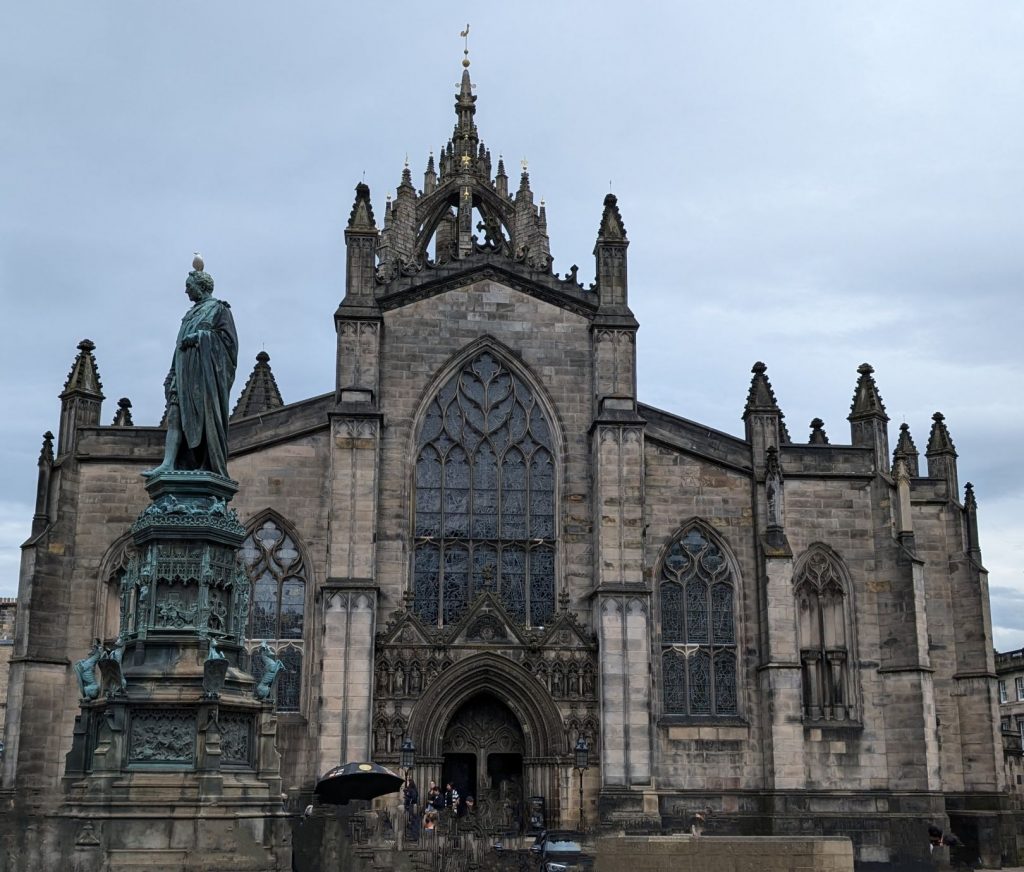
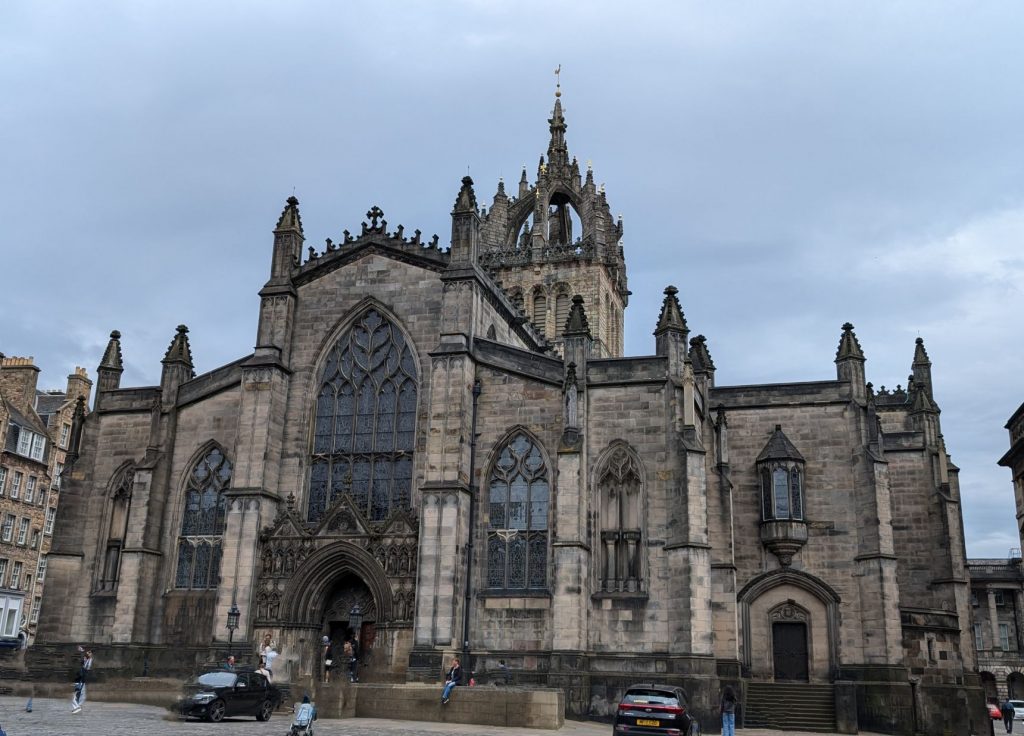
Here are a couple of closeups of Walter Francis Montagu Douglas Scott, complete with a bird on his head. (So many statues had birds on the heads of the figures.)
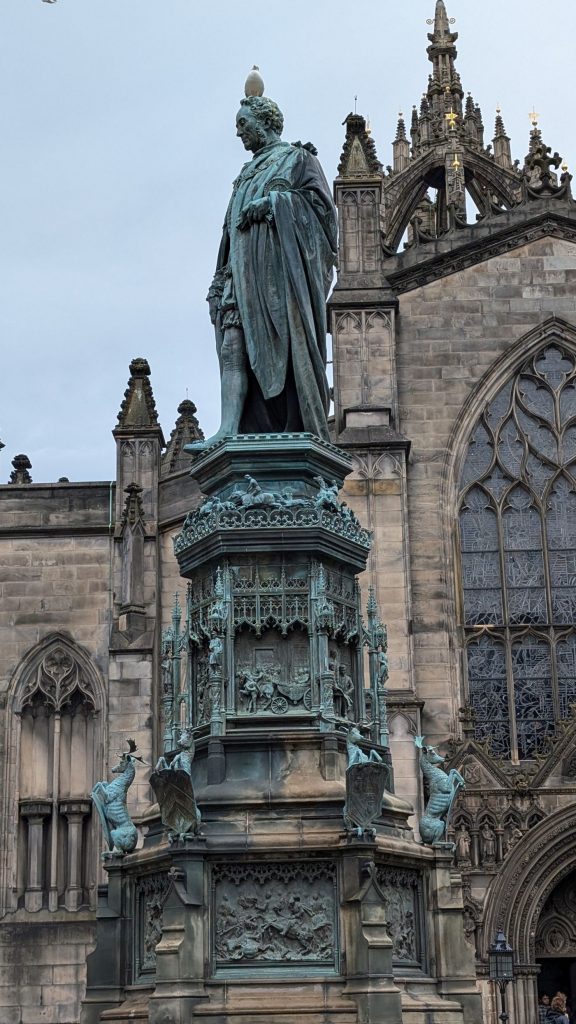
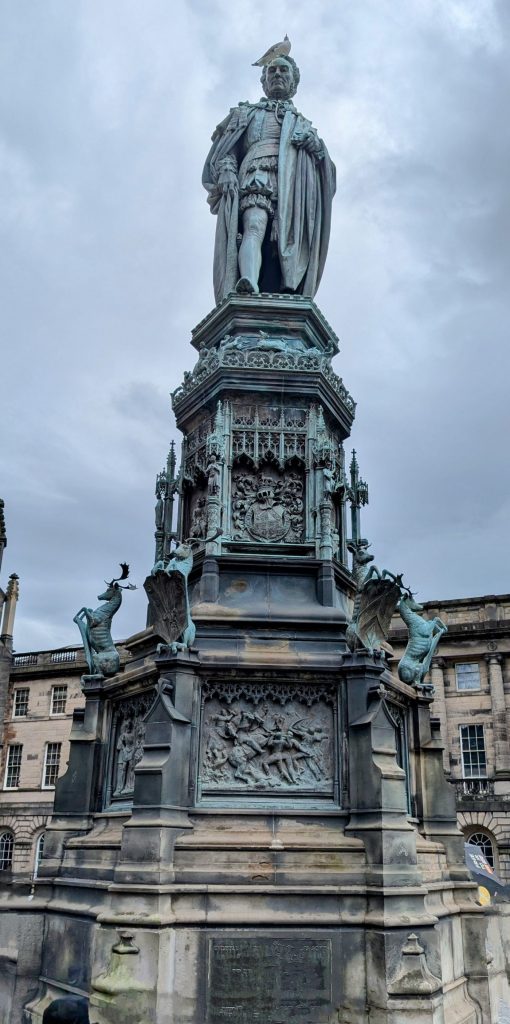
And now, the interior of the cathedral. . .
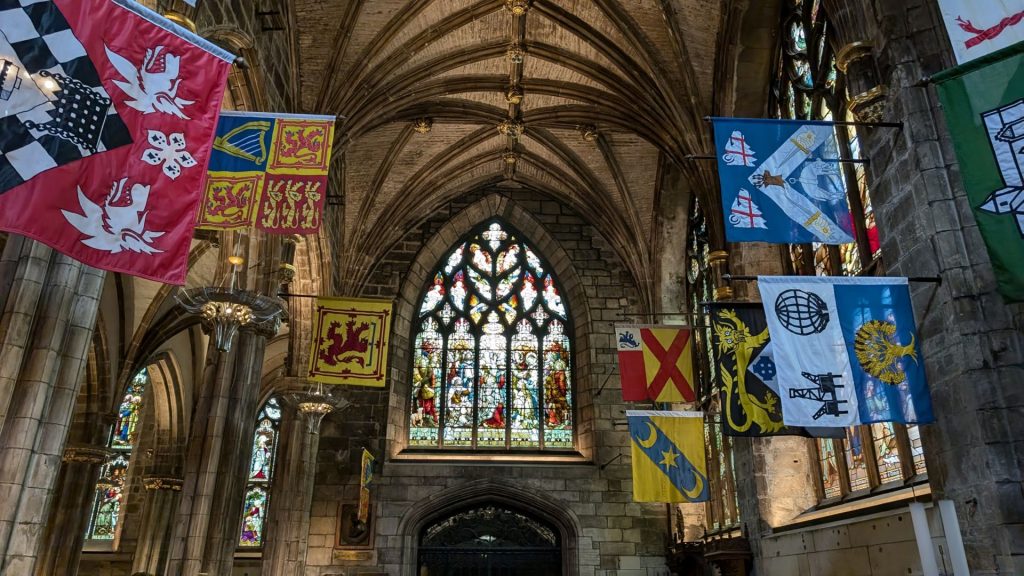
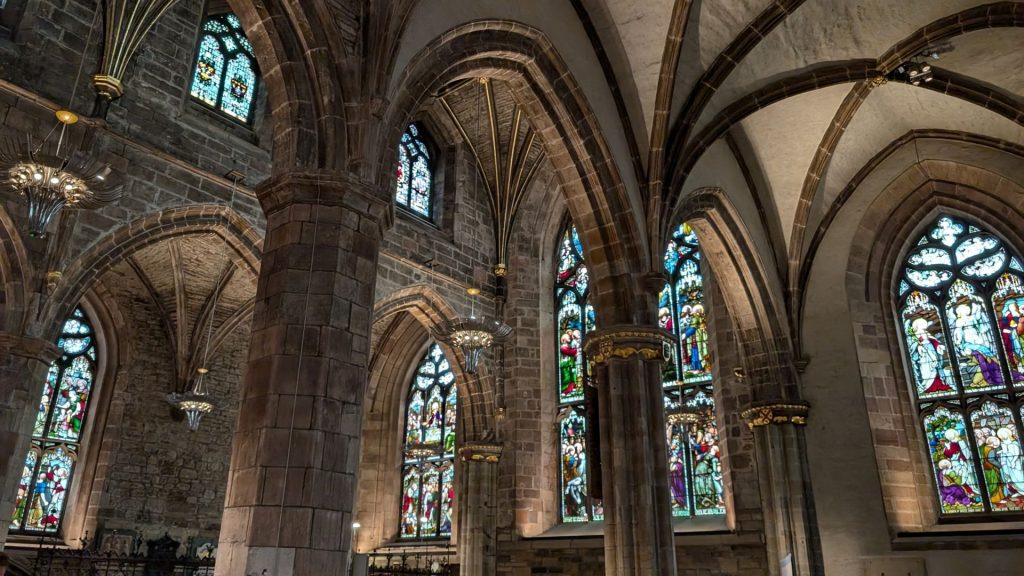
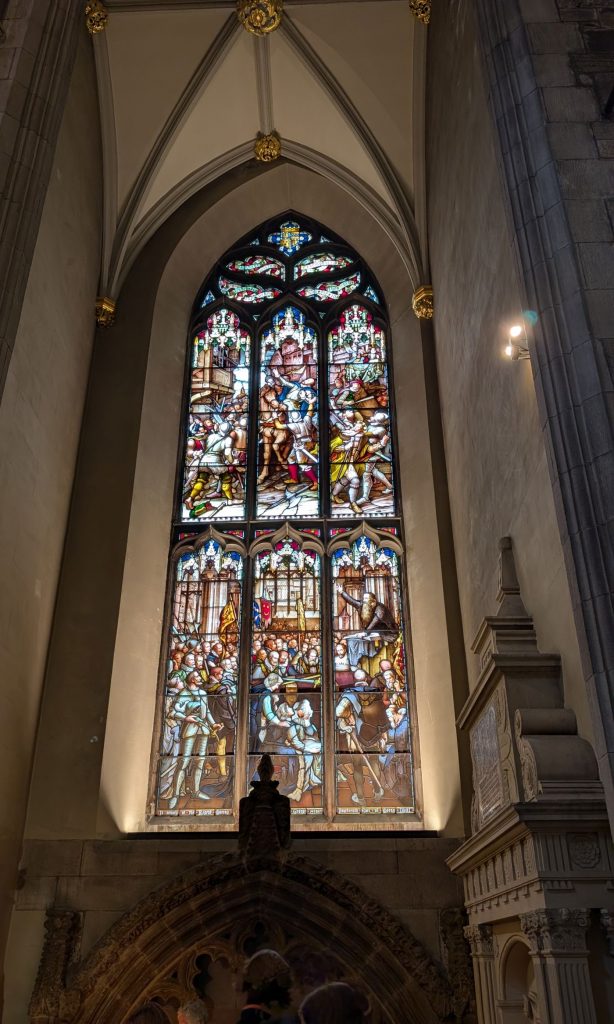
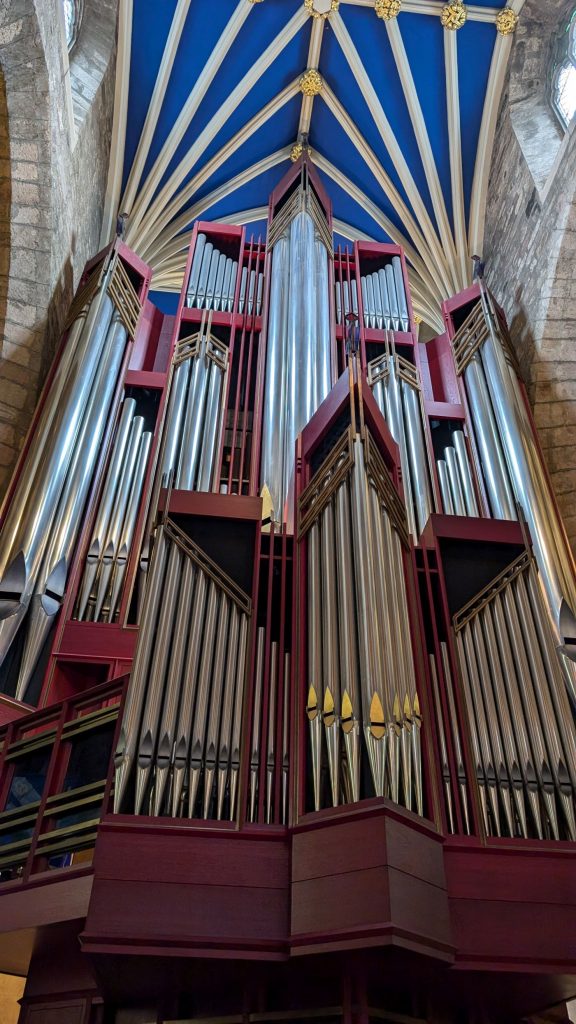
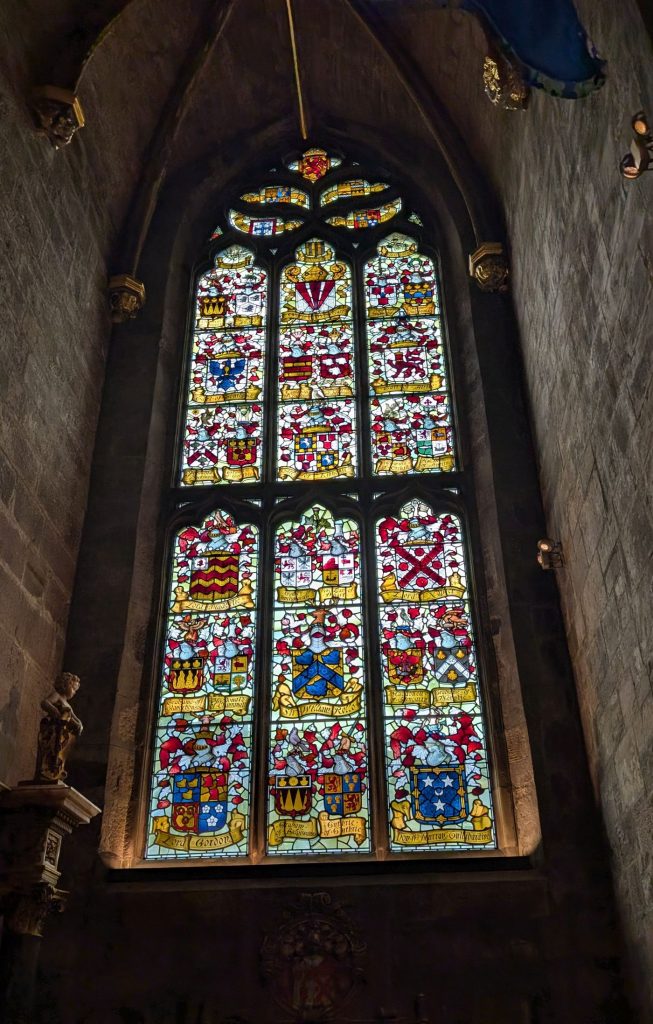
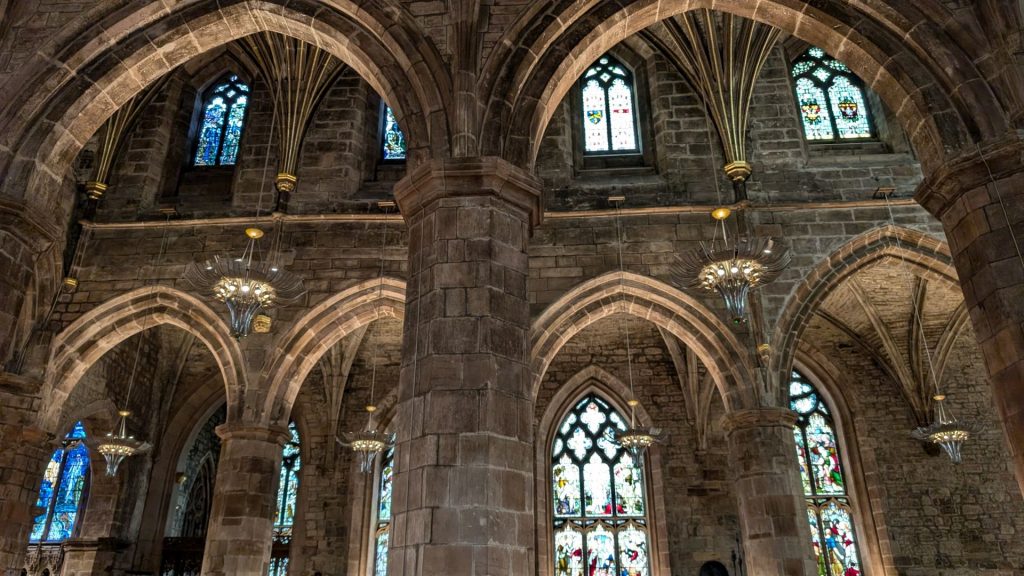
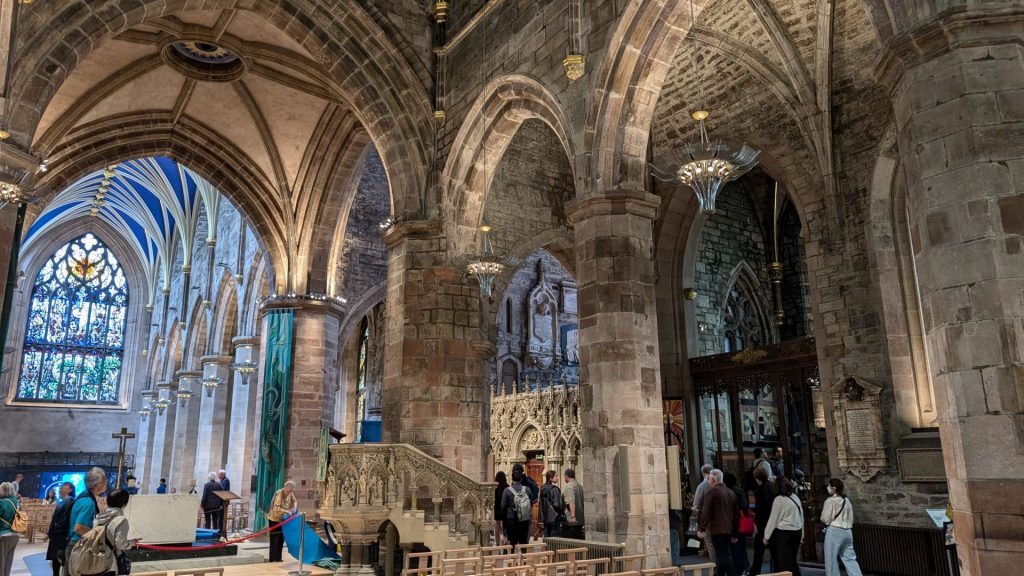
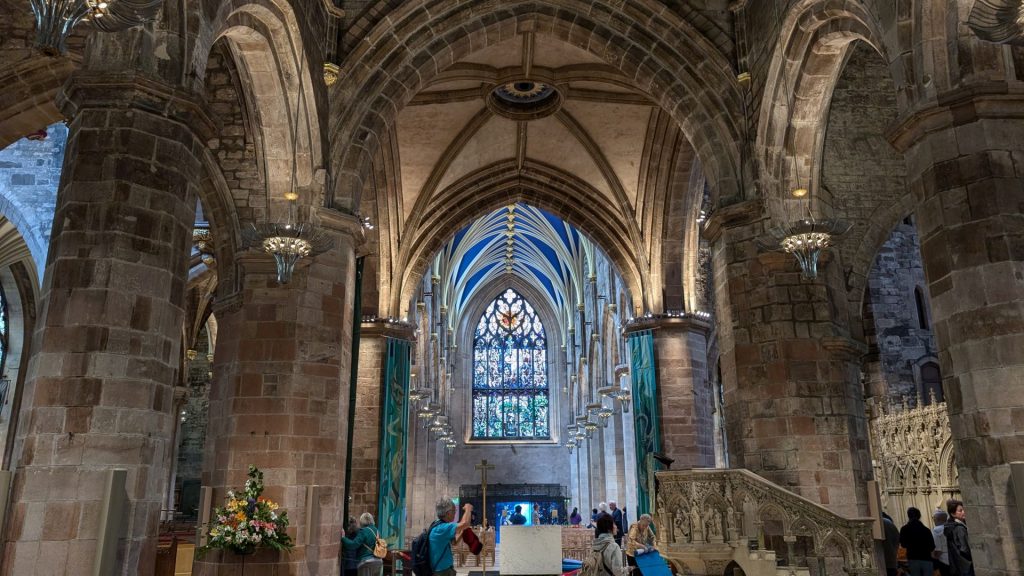
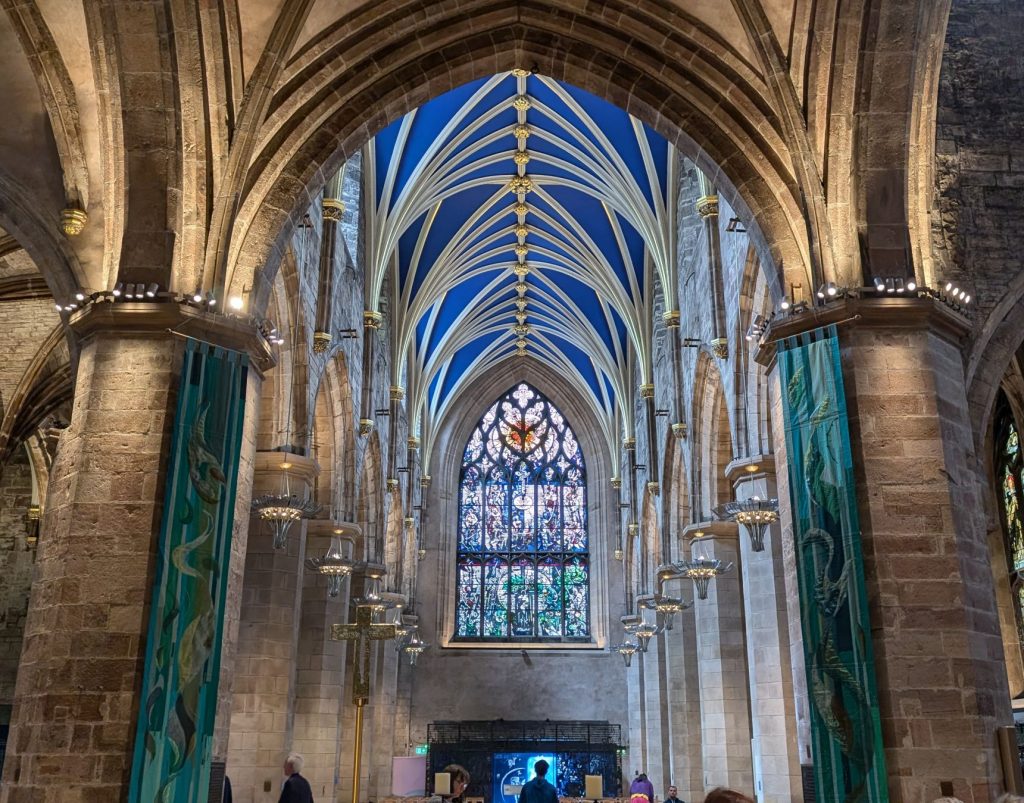
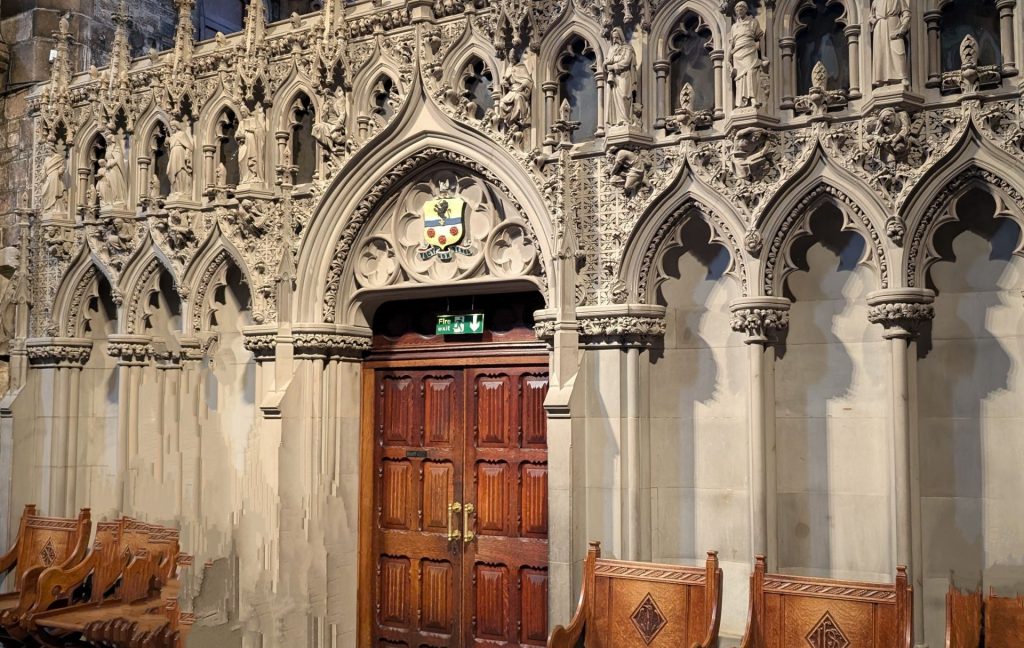
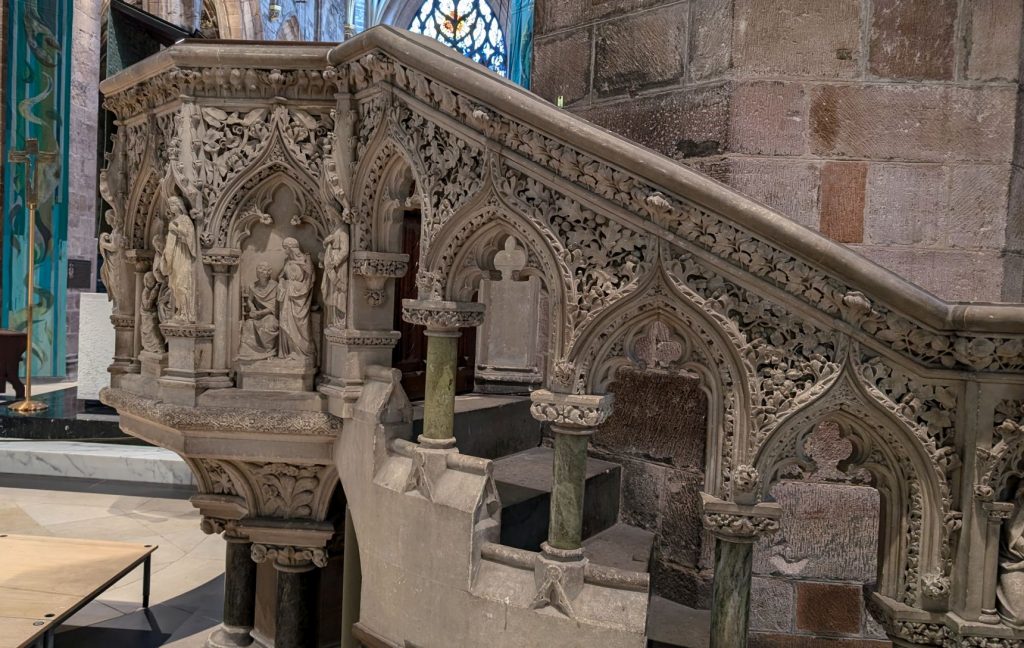
The cathedral also displays a framed, handwritten and signed copy of the National Covenant of 1638. Here’s a picture of the sign describing it followed by a picture of the Covenant, which isn’t legible.
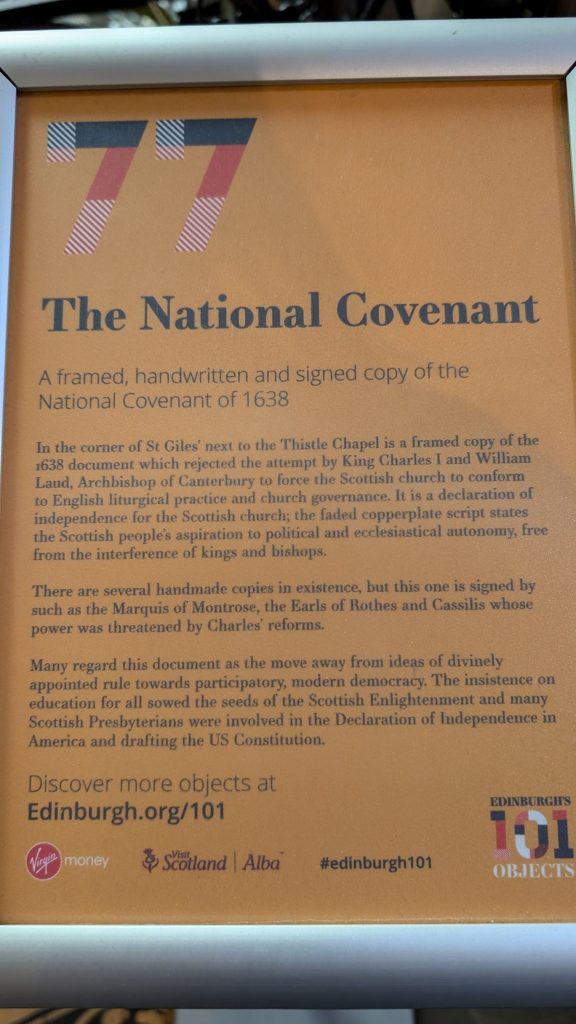
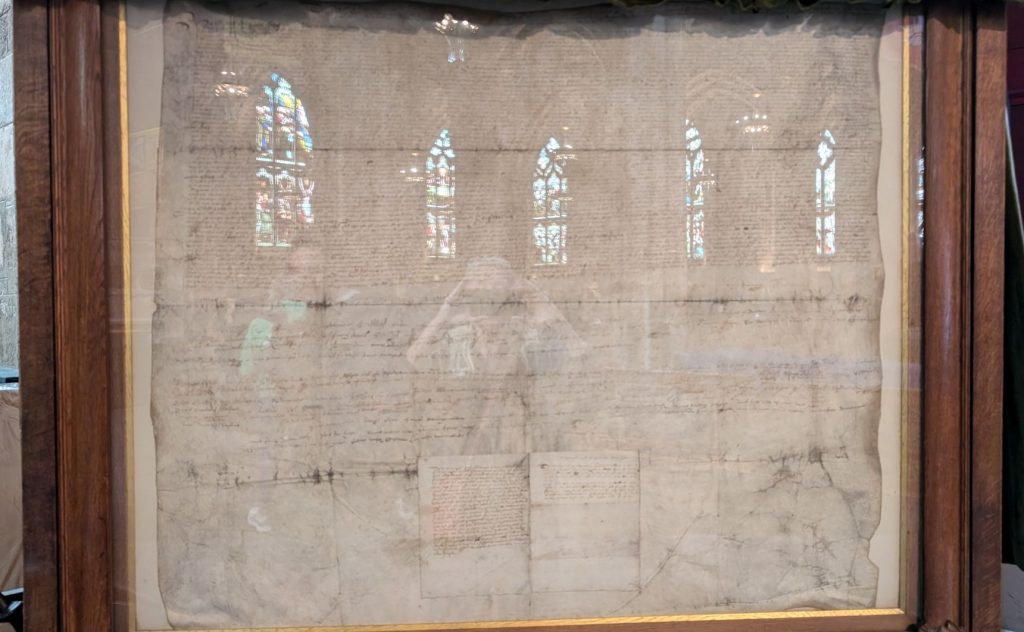
The Marquis of Montrose was referenced above. His memorial is in the cathedral. The sign by the memorial reads as follows:
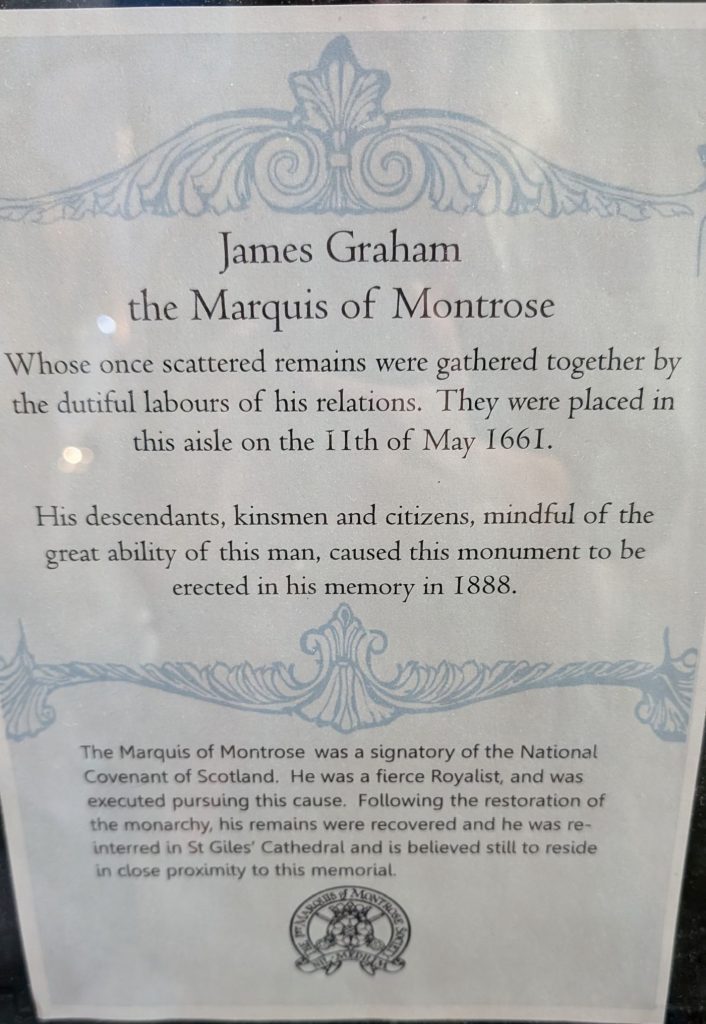
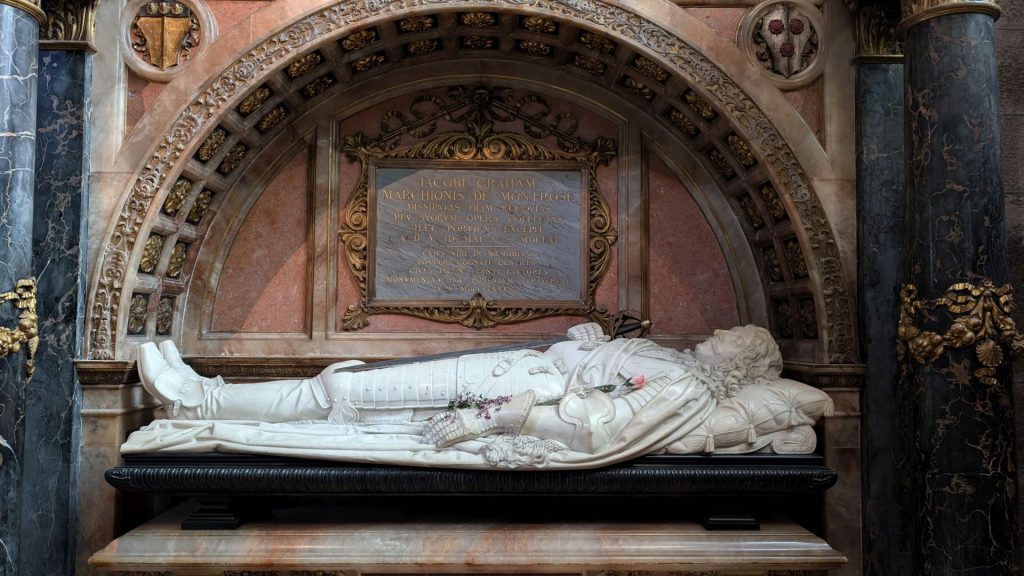
The Covenant sign also referenced the Order of the Thistle. I didn’t know what this was, so I did some research (click on the link above for more info).
The Most Ancient and Most Noble Order of the Thistle is Scotland’s highest order of chivalry and recognizes people who have made significant contributions to the country. The order is made up of 16 knights and ladies, plus the sovereign and other members. The sovereign grants membership, and appointments are made at the monarch’s discretion. The Order is second only in precedence in England to the Order of the Garter.
The Thistle Chapel located in St Giles’ Cathedral was closed so I took a picture of the door. I think this is where the ceiling was super awesome, so I included a picture of it. If it wasn’t here, it was at least somewhere inside of the cathedral.
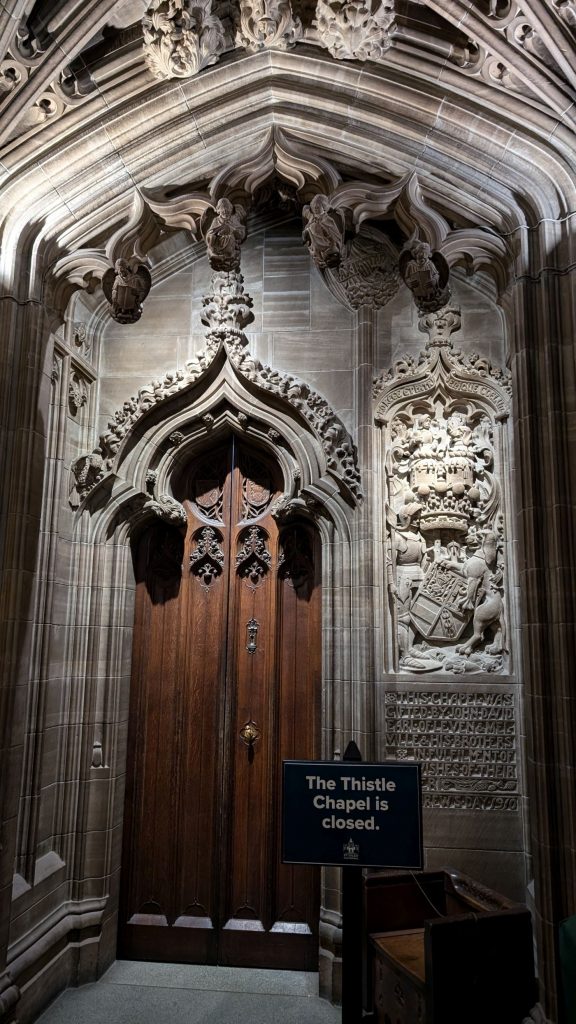
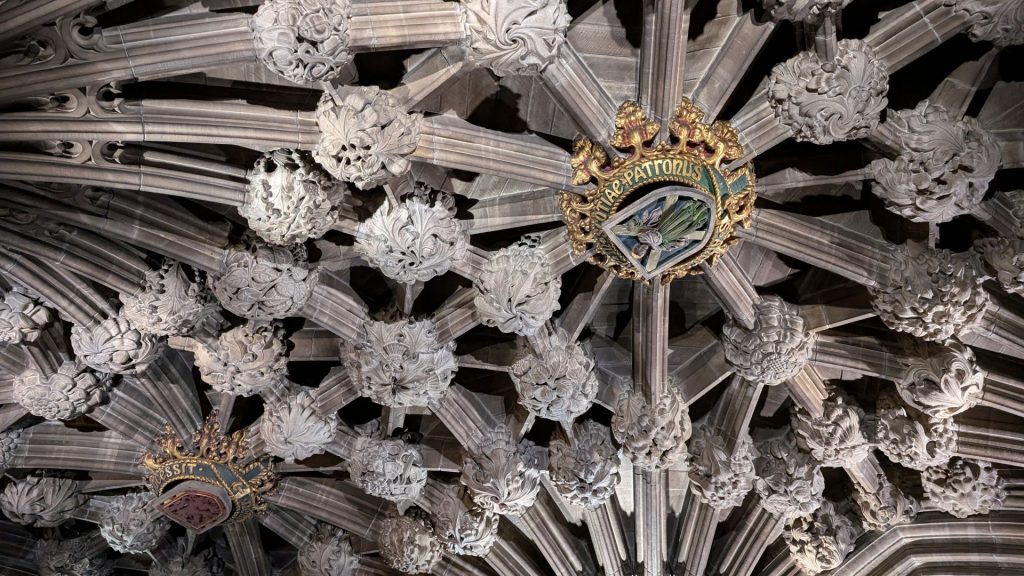
The cathedral displayed a few other fun facts about the Order of the Thistle:
“Whilst once the Knights were chosen in recognition of their power in Scotland and support of the King and Queen, the Order is now used as a way of recognizing individuals who have dedicated their lives to making Scotland a better place for its people and advancing the name of Scotland on the international stage. Lady Marion Fraser, the first non-royal female member, was a renowned educator, who became director of St Mary’s Music School and later Director of Scottish Opera, one of the many ways she patronized the arts. Whilst many visitors may look for Sean Connery’s coat of arms in the Chapel, he was not a knight of this order, but the order counts Sir Fitzroy Maclean of Dunconnel amongst its past members. He was a close friend of Ian Fleming and is said to be one of the inspirations for Fleming’s most famous creation , and one of Connery’s most famous roles, James Bond.”
Now let’s talk about the guy pictured below in the middle. As you read above, St Giles’ Cathedral was John Knox’s parish church during the Reformation. Well, this is John Knox. I could type a bunch of stuff, but – as per usual in St Giles’ – there was a lovely sign telling us about John Knox. I’ve added it below the picture of his statue. You will have to click on it to enlarge it to read it.
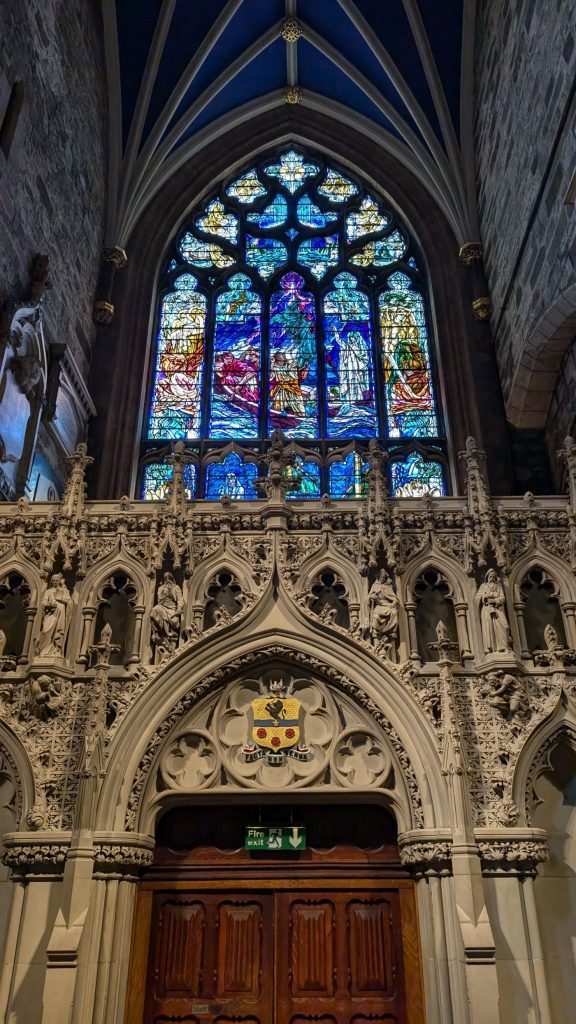
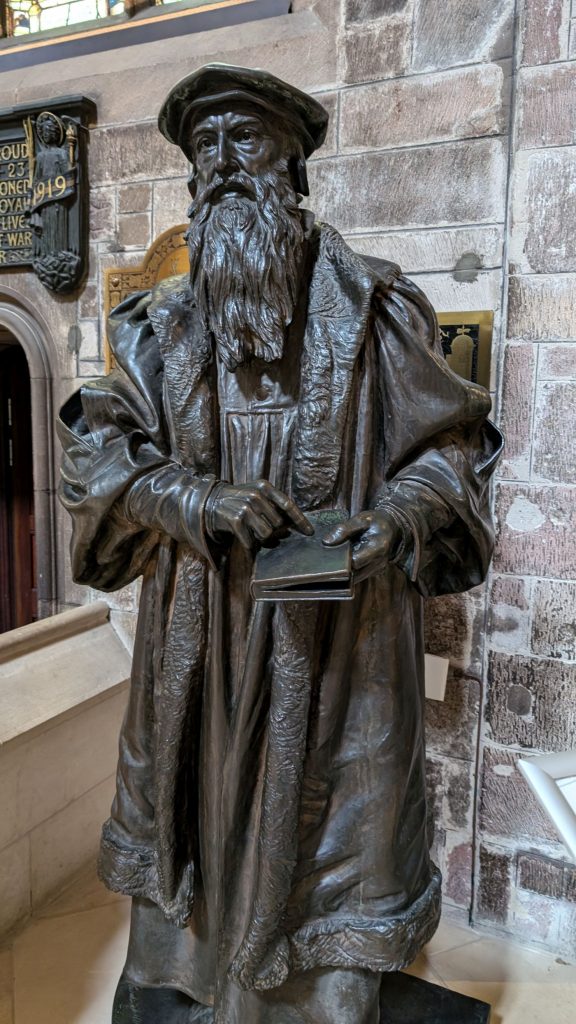
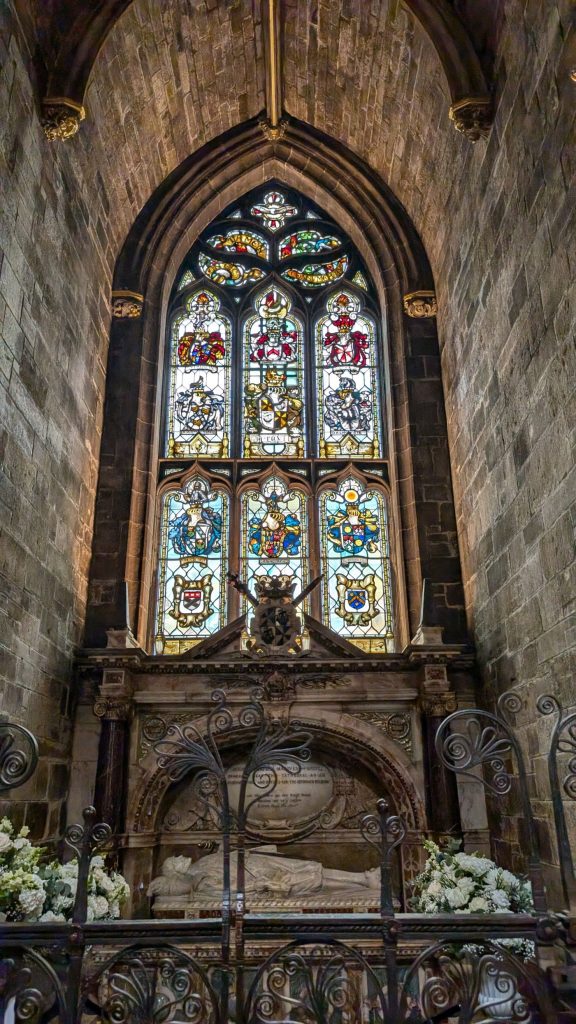
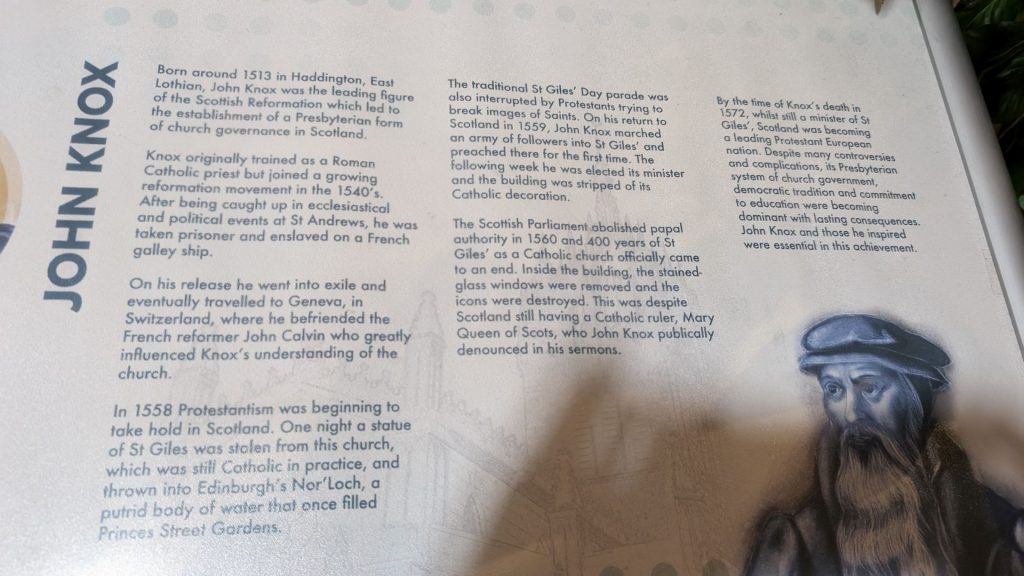
Okay, just a couple more pictures from St Giles and we can finally move onto the next topic. 🙂
The window pictured below has six saints. In St Giles, the windows were planned to form a continuous narrative starting in the north-east corner and finishing on the north-west side. One of the last windows of this plan shows the patron saint of Scotland, St. Andrew, holding his cross. The depiction of saints, rather than Bible stories alone, by the mid 20th century shows the change in attitudes to decoration during that period. St. Andrew wears a flowing peacock-blue garment and his features are modeled after the prominent Edinburgh physician James Jamieson. This window was paid for by a grateful patient who insisted that St. Andrew bear the features of the doctor.
St. Giles is pictured with his deer. Why is St. Giles pictured with a deer? Here’s why: “St. Giles (ca. 650 – 710) was a Greek man who is said to have been born of nobility. From a young age he was drawn to the pursuit of holiness, and was able by the power of God to effect the miraculous. He cured the sick — even as a child, when he gave his coat to a sick man who was cured as soon as he put it on. He cured a man who’d been bitten by a venomous snake, and drove demons out of the possessed.
Making his way to the sea, he calmed a storm that was endangering some sailors and, in return, they allowed him to sail with them to Rome. He made his way to Arles, where he became known for his works and, later, went into the wilderness to live as a hermit, making a home out of a little pit, and taking as his only friend a deer who was kind enough to keep him alive with her milk.”
The picture beneath it (which, again, you will have to click on to enlarge) says a bit about each of the saints.
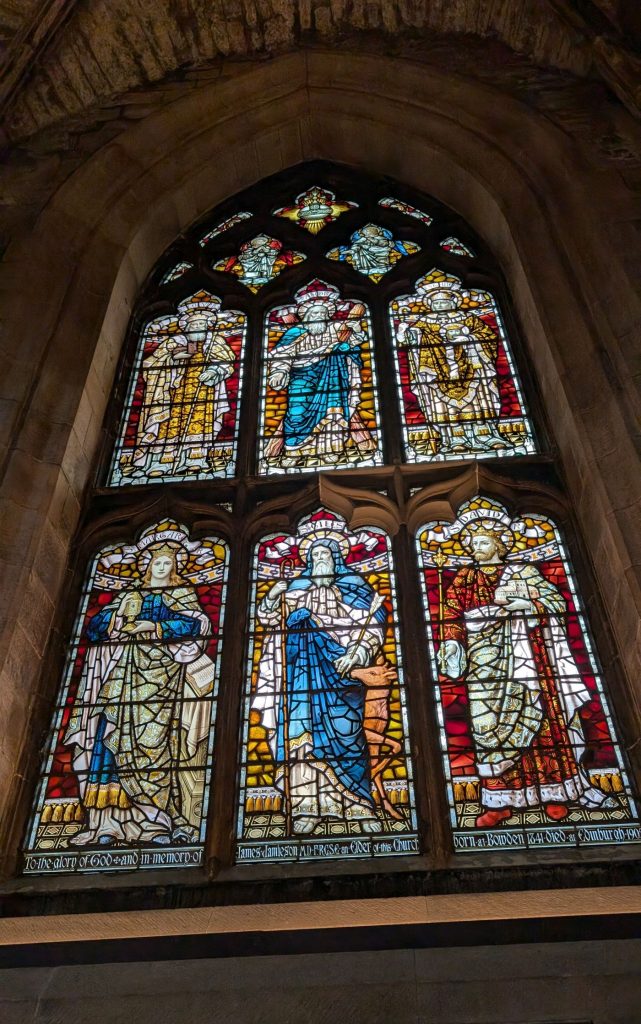
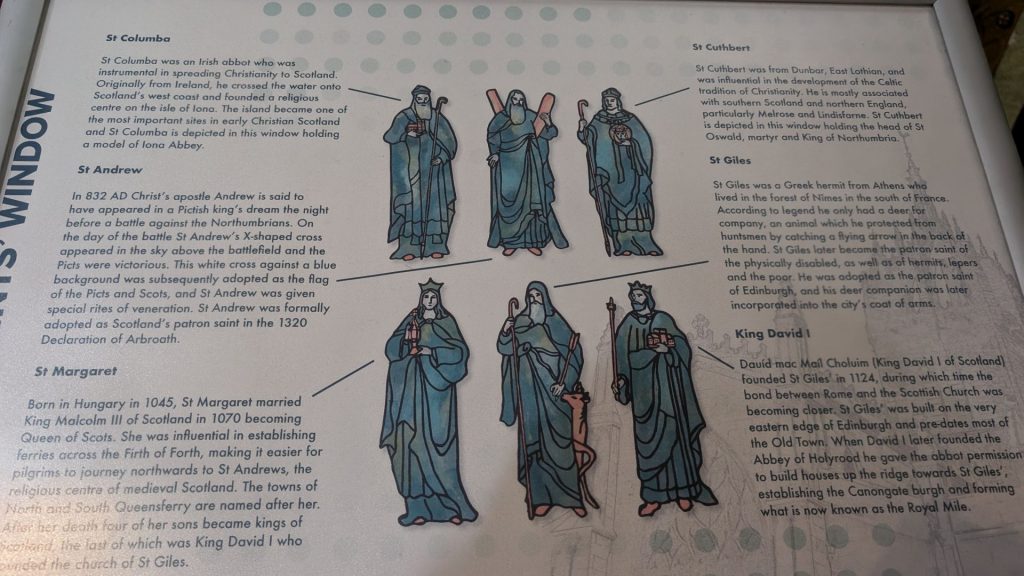
Moving on. . . also along the Royal Mile is a statue of Adam Smith. He was kind of a big deal.
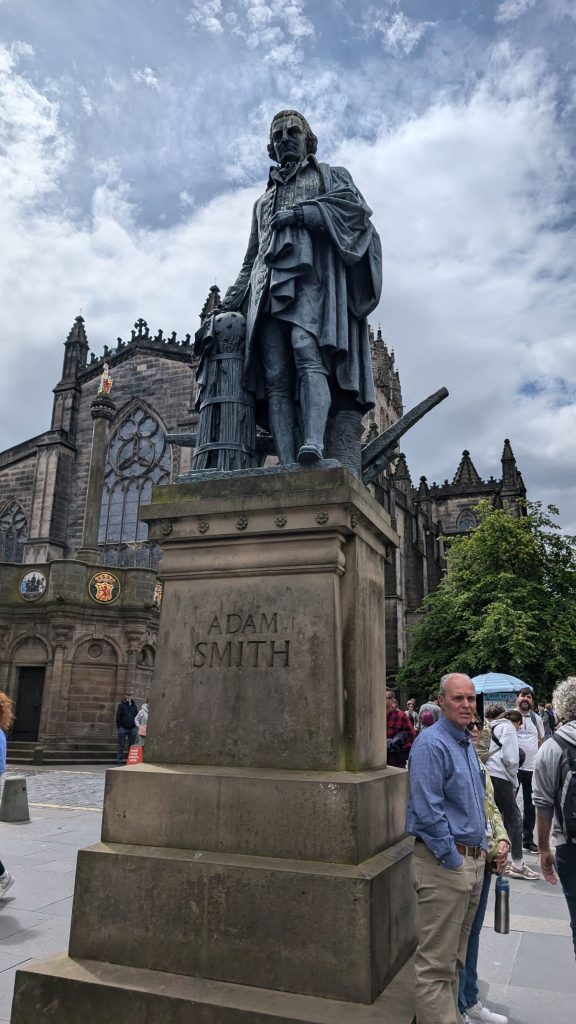
Adam Smith (1723-1790) is widely considered the father of modern economics with the publication of his landmark work, The Wealth of Nations. The success of this book, published in 1776, is related not only to its contents but also to the existence of a literate reading public at that time. Smith was fortunate to be part of the Scottish Enlightenment.
From https://www.adamsmith.org/about-adam-smith:
“In Smith’s day, people saw national wealth in terms of a country’s stock of gold and silver. Importing goods from abroad was seen as damaging because it meant that this wealth must be given up to pay for them; exporting goods was seen as good because these precious metals came back.
So countries maintained a vast network of controls to prevent this metal wealth draining out – taxes on imports, subsidies to exporters, and protection for domestic industries. The same protectionism ruled at home too. Cities prevented artisans from other towns moving in to ply their trade; manufacturers and merchants petitioned the king for protective monopolies; labour-saving devices were banned as a threat to existing producers.
Smith showed that this vast ‘mercantilist’ edifice was folly. He argued that in a free exchange, both sides became better off. Quite simply, nobody would trade if they expected to lose from it. The buyer profits, just as the seller does. Imports are just as valuable to us as our exports are to others.
Because trade benefits both sides, said Smith, it increases our prosperity just as surely as do agriculture or manufacture. A nation’s wealth is not the quantity of gold and silver in its vaults, but the total of its production and commerce – what today we would call gross national product.
The Wealth of Nations deeply influenced the politicians of the time and provided the intellectual foundation of the great nineteenth-century era of free trade and economic expansion. Even today the common sense of free trade is accepted worldwide, whatever the practical difficulties of achieving it.”
Next on the agenda was Calton Hill. From Calton Hill, one can enjoy stunning 360° views of Edinburgh. The hill is home to a collection of historic monuments, including the unfinished National Monument, honoring Scottish soldiers who died during the Napoleonic wars. The memorial inspired Calton’s moniker, “Athens of the North,” due to its likeness to the Parthenon. Other monuments are the Nelson Monument, the Dugald Stewart Monument, the Monument to the Scottish Parliament and the City Observatory. Here are several pictures of the monuments and the views.
This is the most complete description of Calton Hill I could find online (it is from Wikipedia!): https://en.wikipedia.org/wiki/Calton_Hill
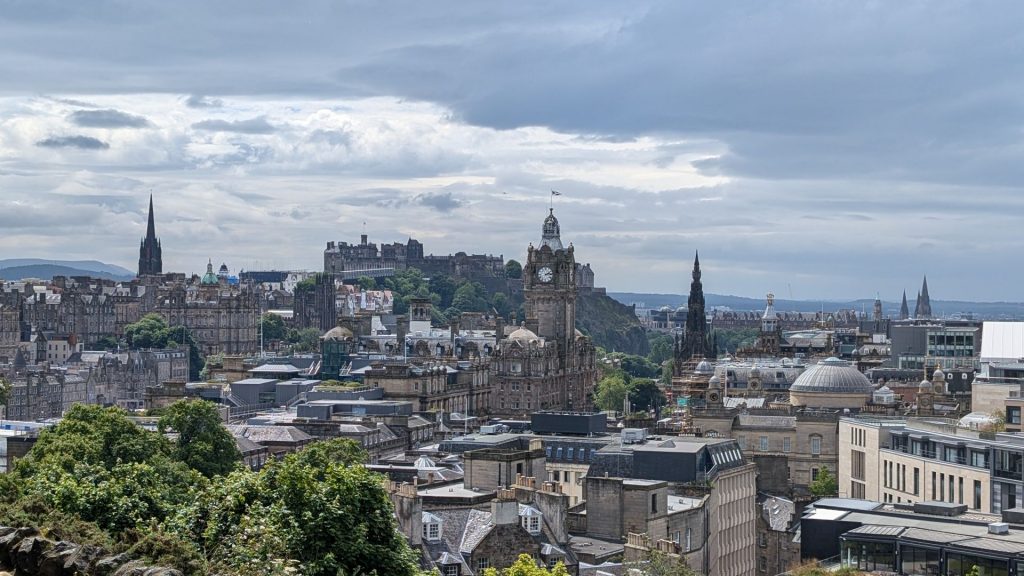
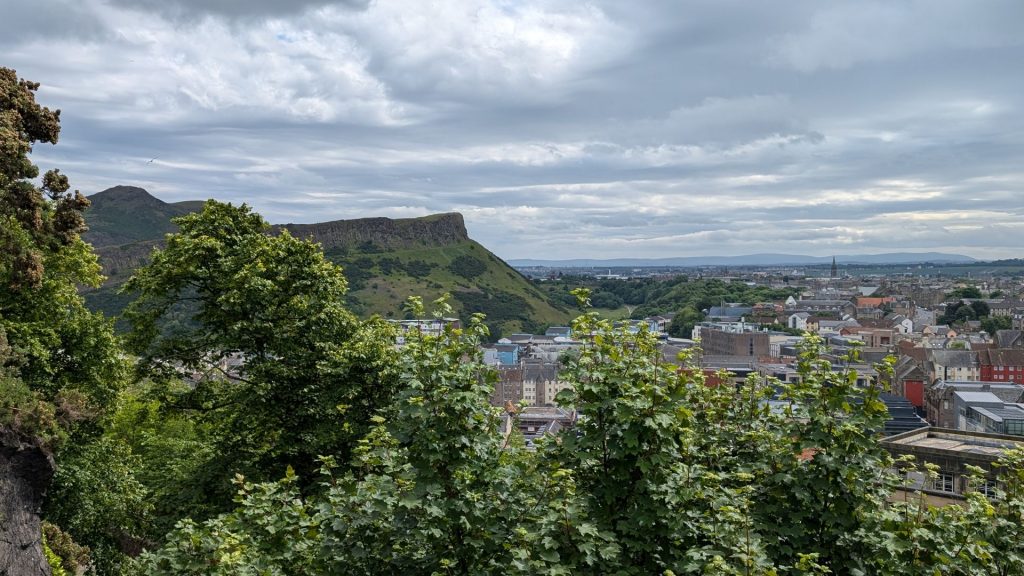
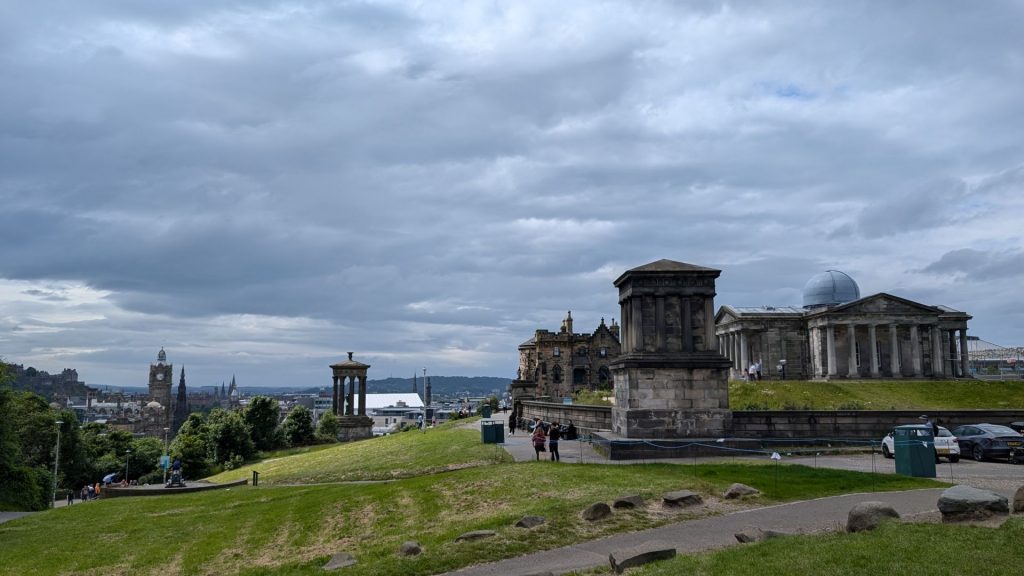
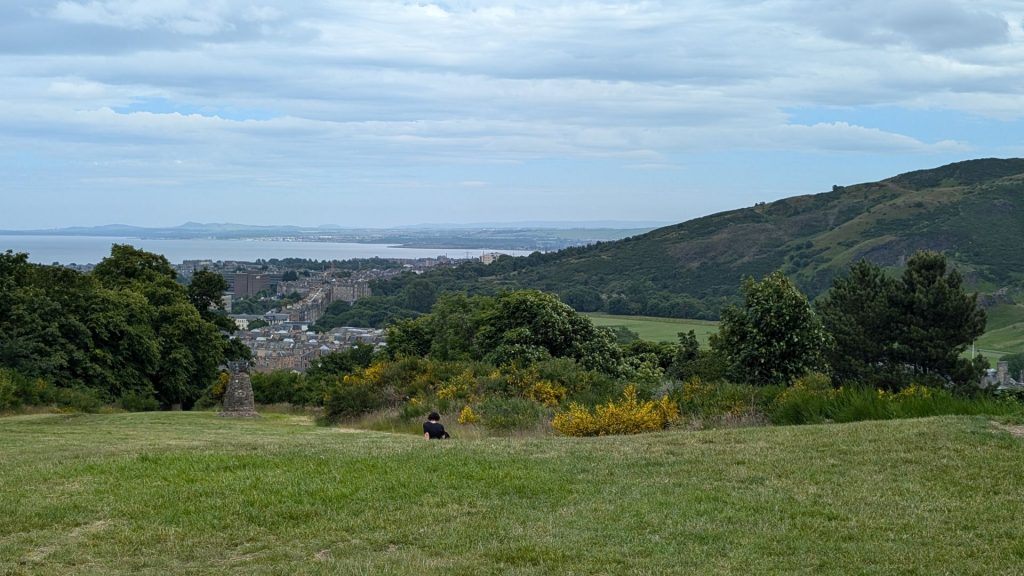
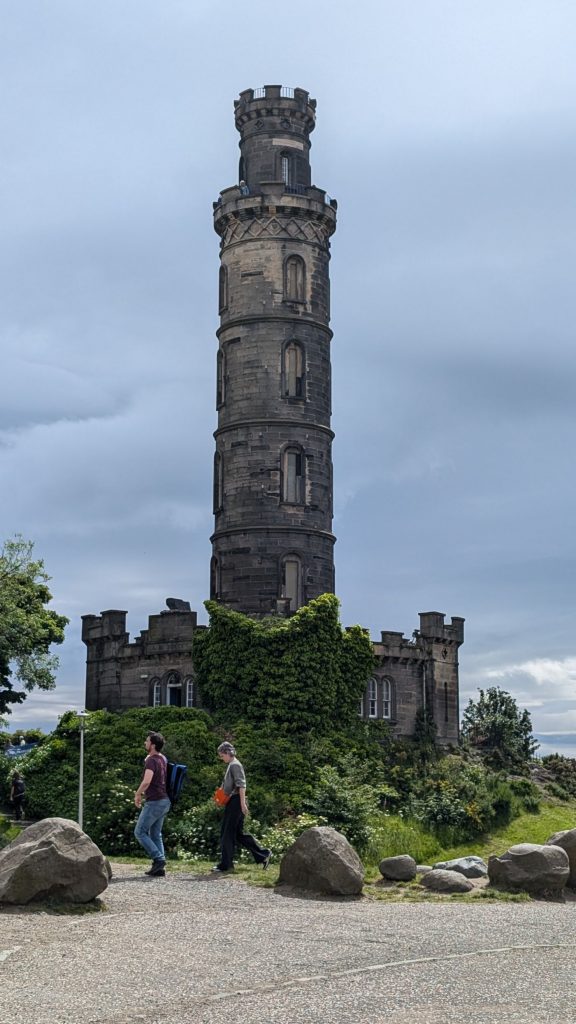
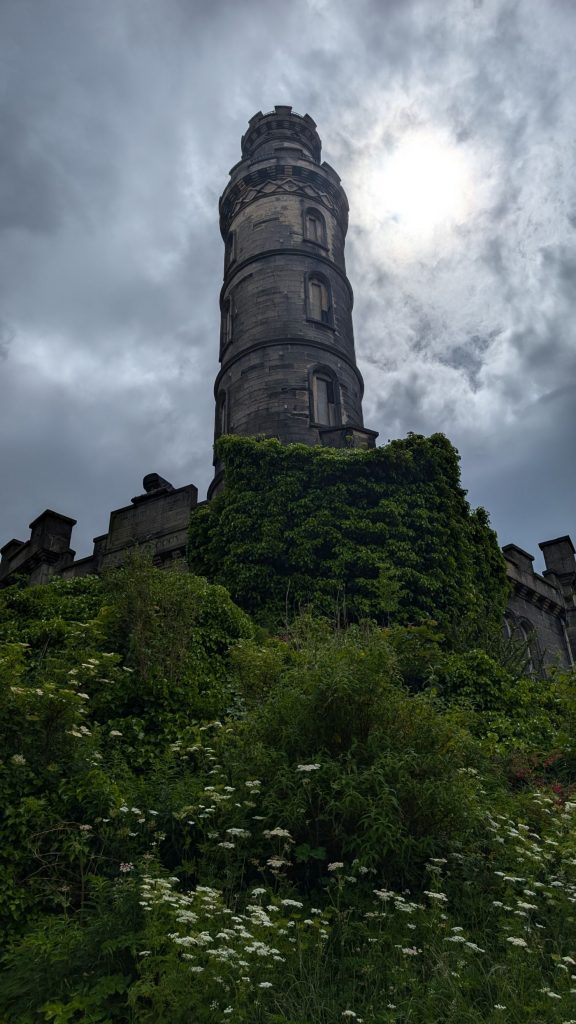
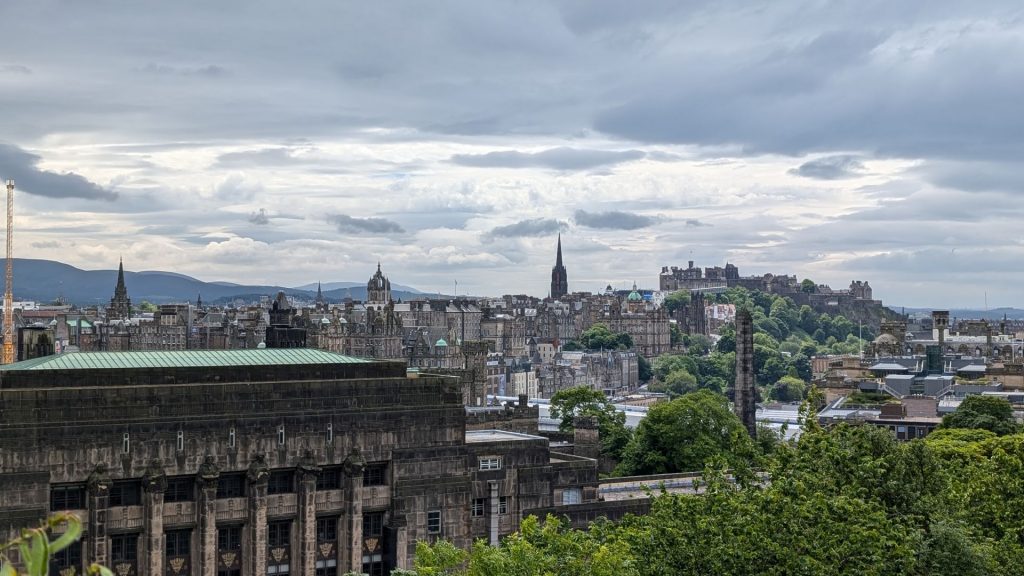
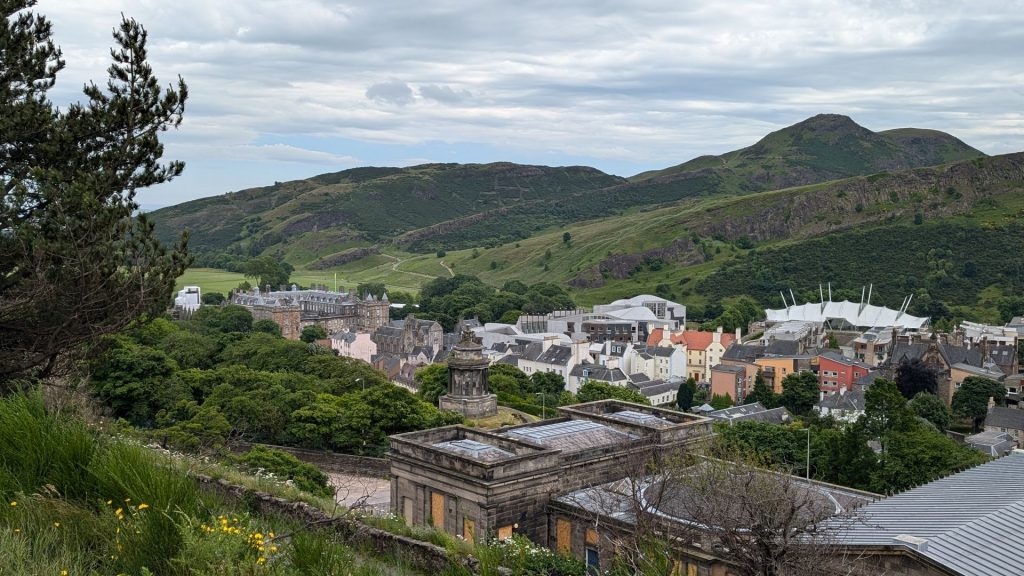
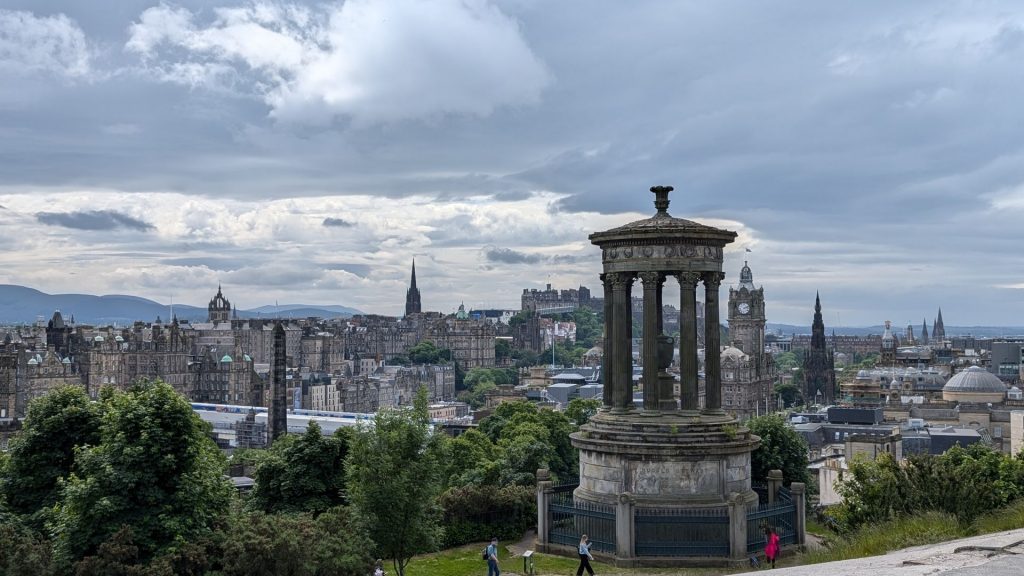
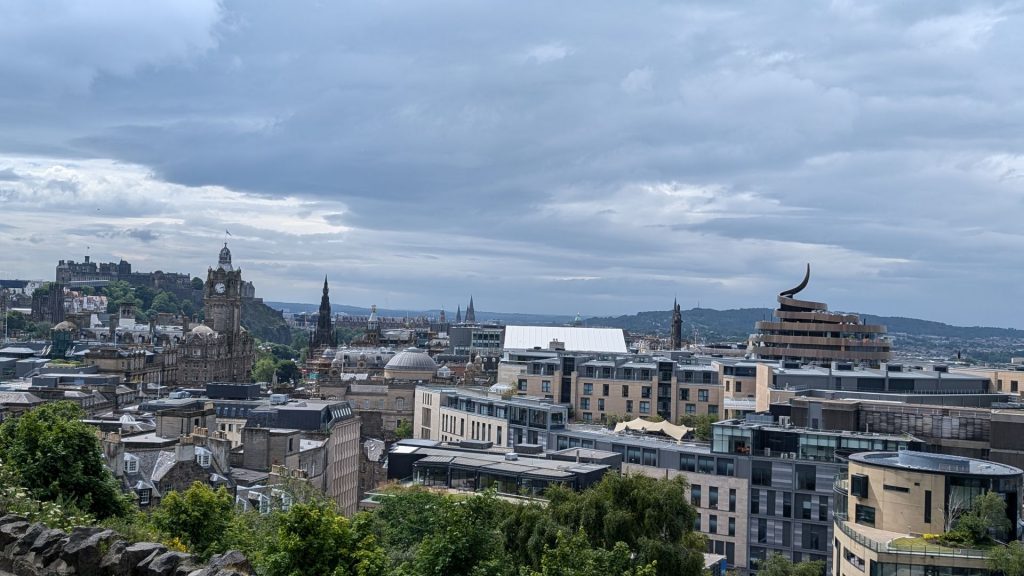
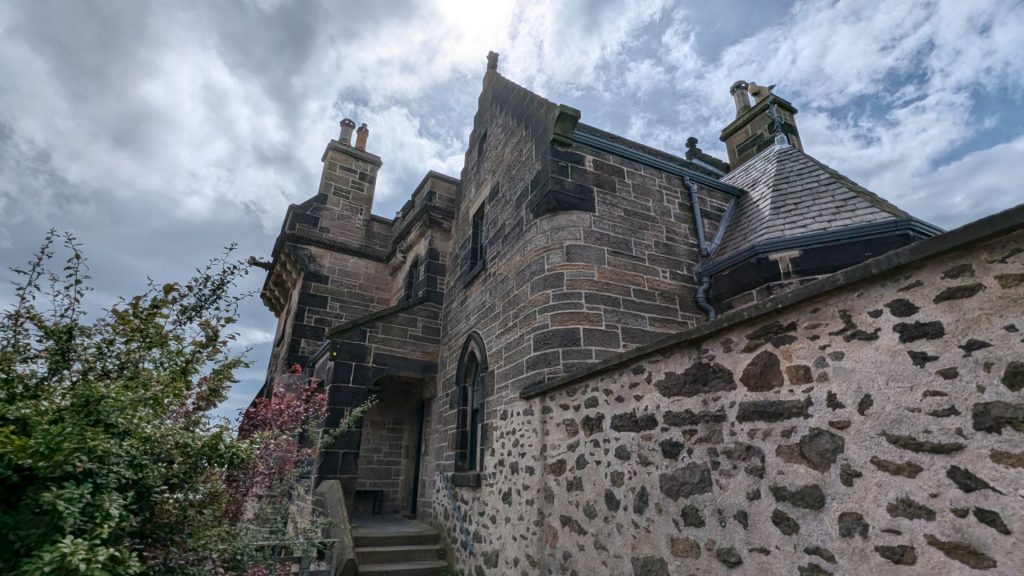
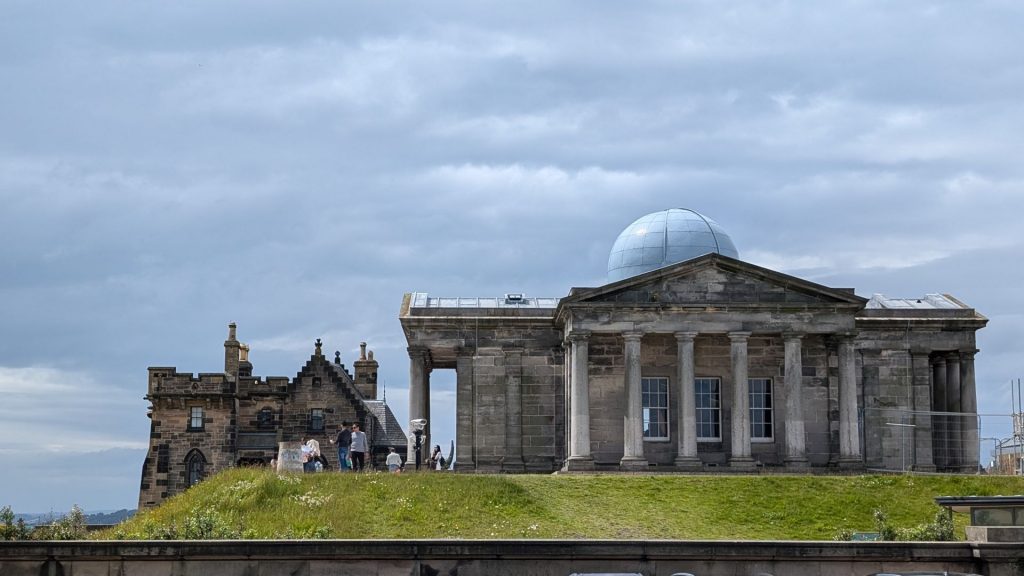
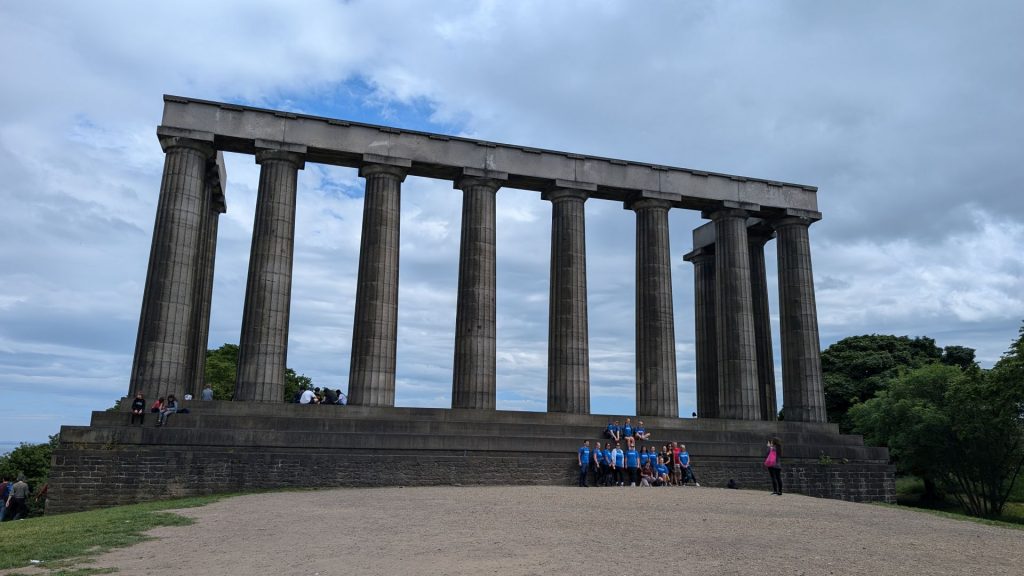
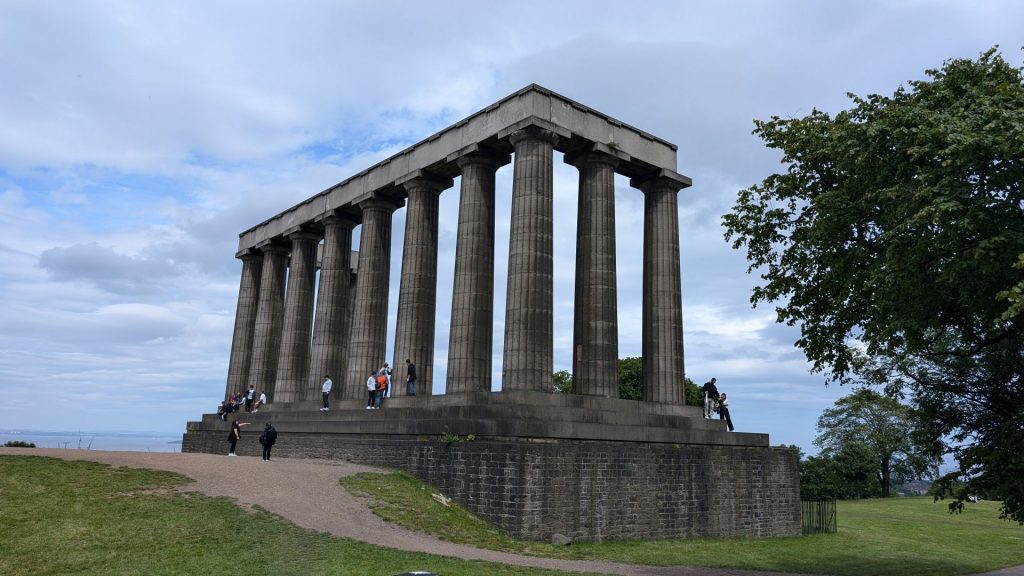
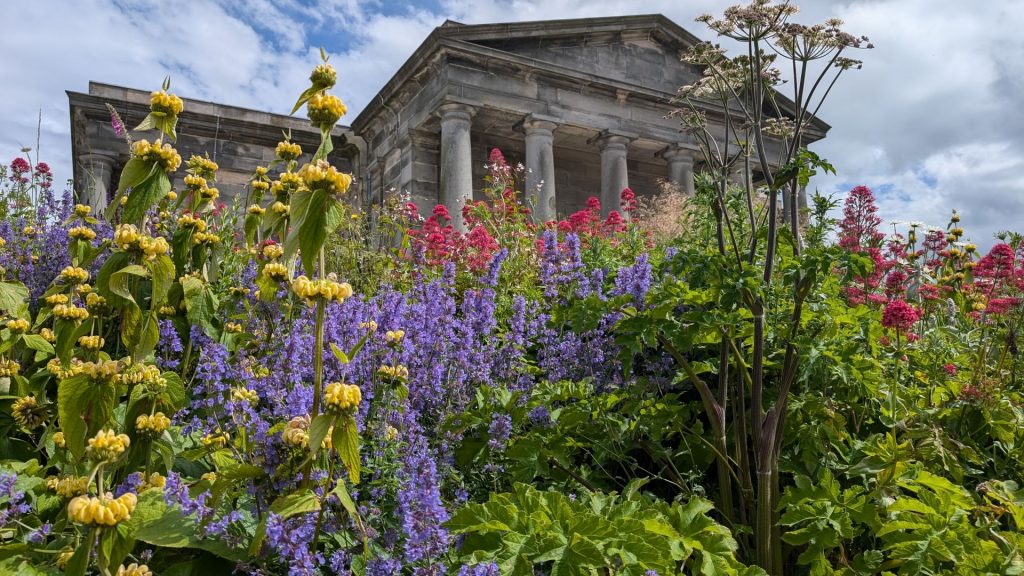
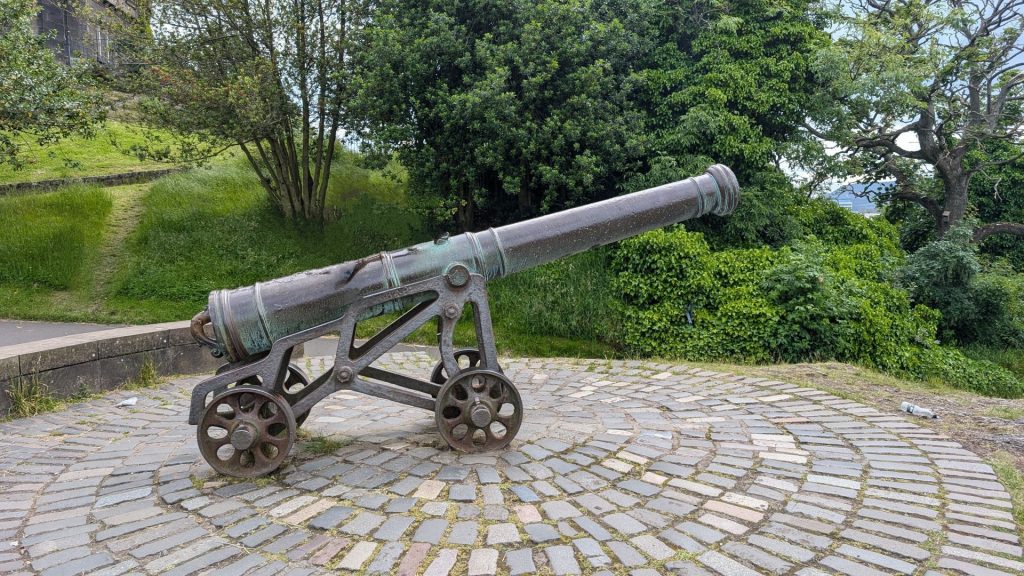
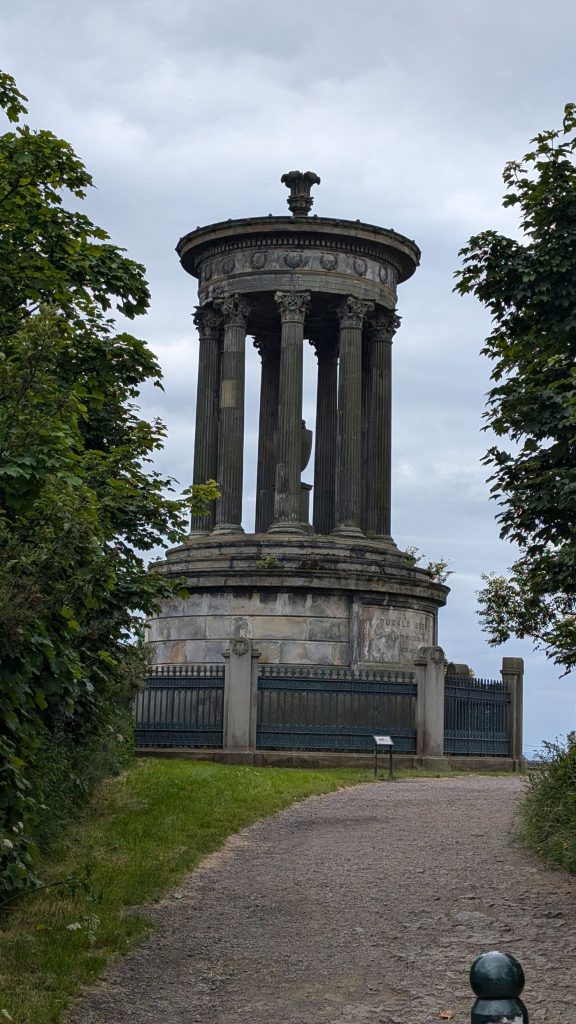
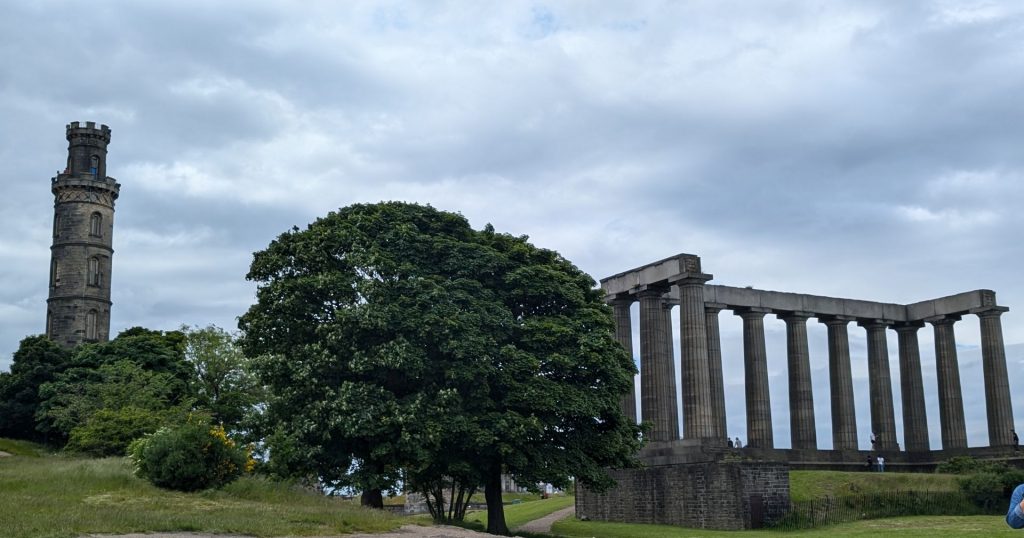
Grassmarket
This square is filled with pubs and restaurants and amazing views of the castle above.
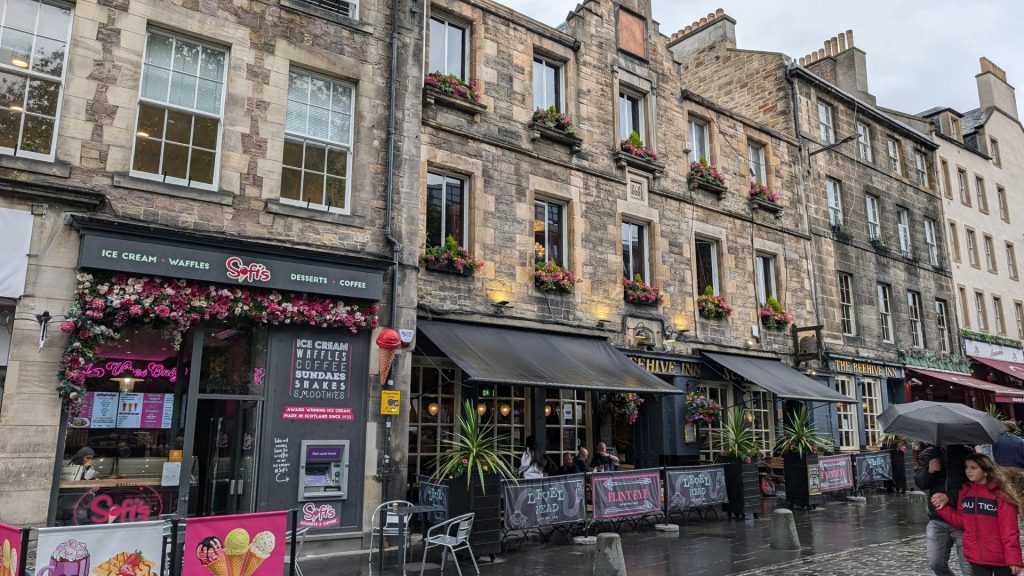
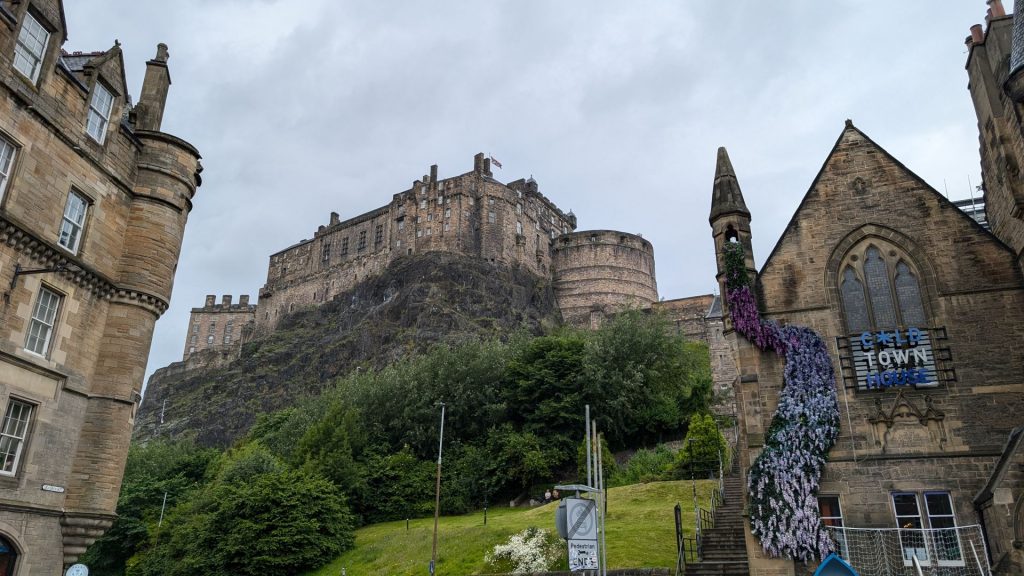
Greyfriars Kirkyard is an old cemetery supposedly haunted by restless spirits. If you’re a Harry Potter fan you can find the graves that inspired JK Rowling for several characters in the Harry Potter books including McGonagall and Riddell. Beyond the back gates of Greyfriars Kirkyard is George Heriot’s School, which supposedly served as inspiration for Hogwarts.
Michael isn’t that fond of cemeteries, but I enjoy them. Why? I am not sure.
Here are some pictures we took on the way to Greyfriars Kirkyard and of the Kirkyard. I think you will be able to tell when we arrive at the Kirkyard.
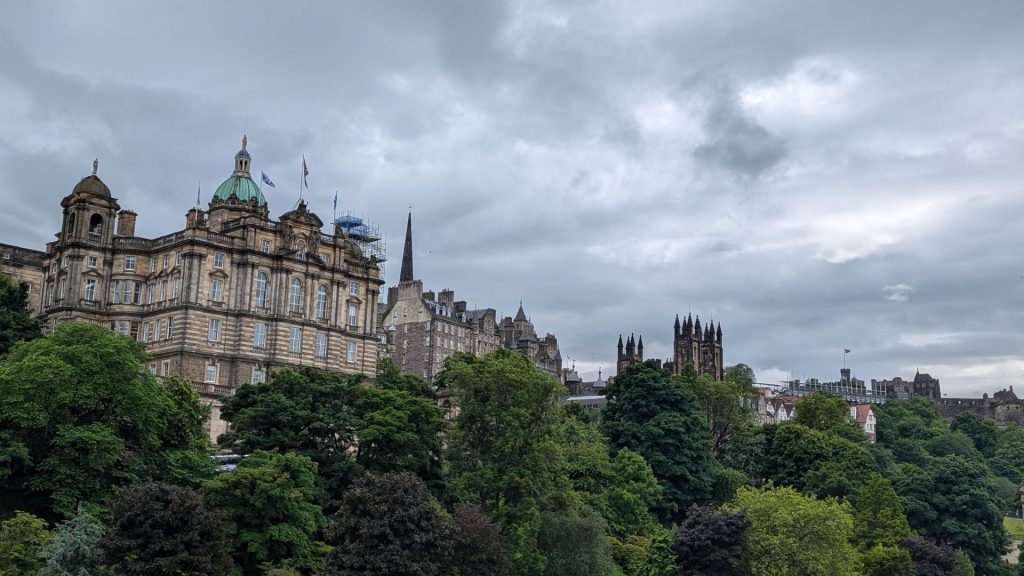
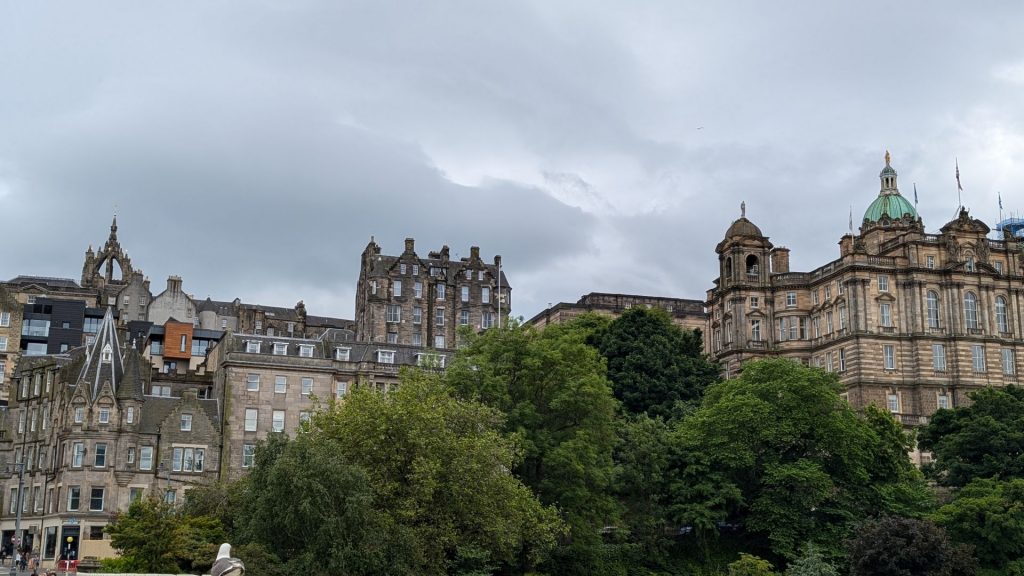
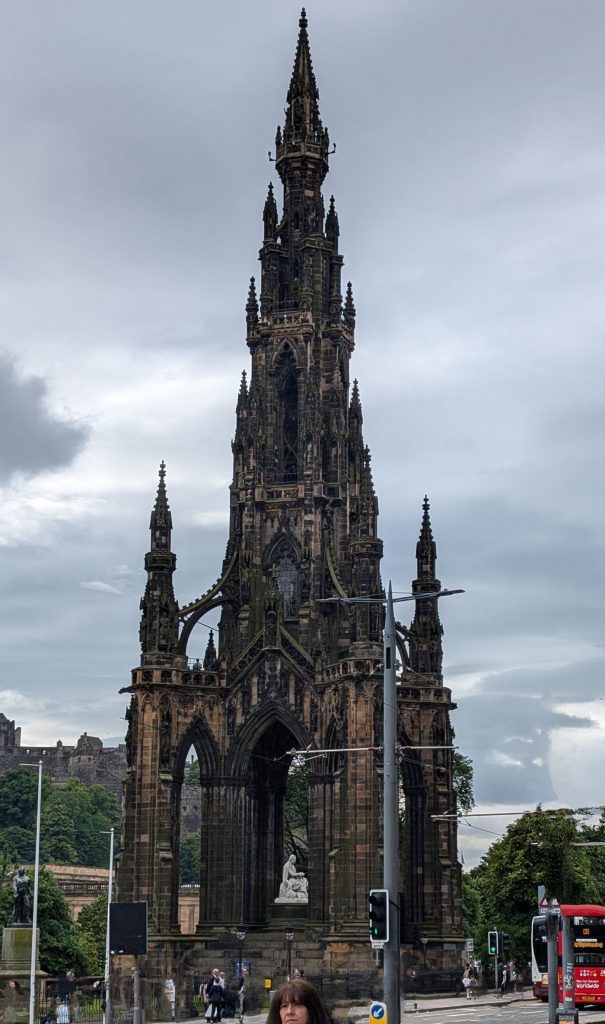
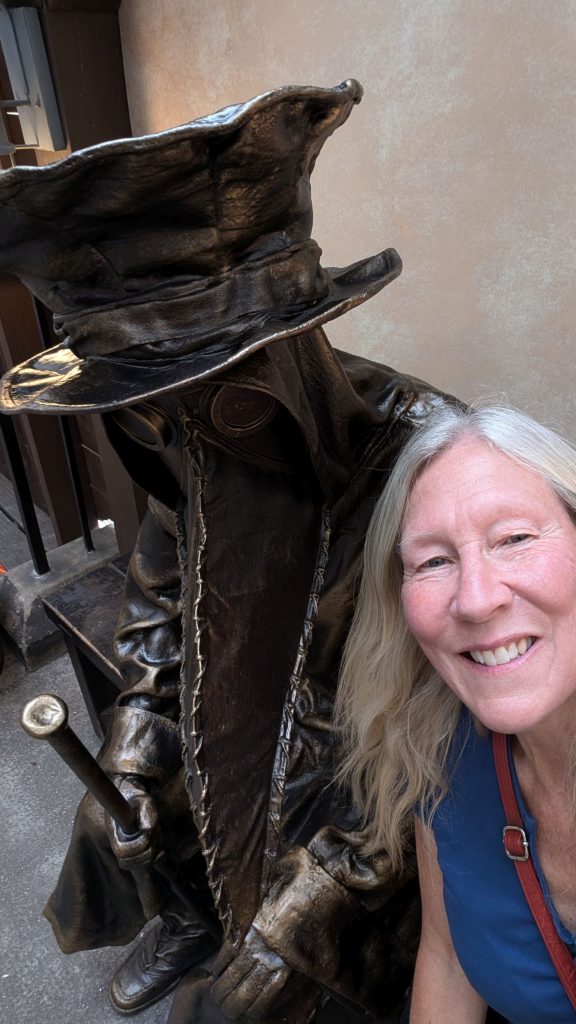
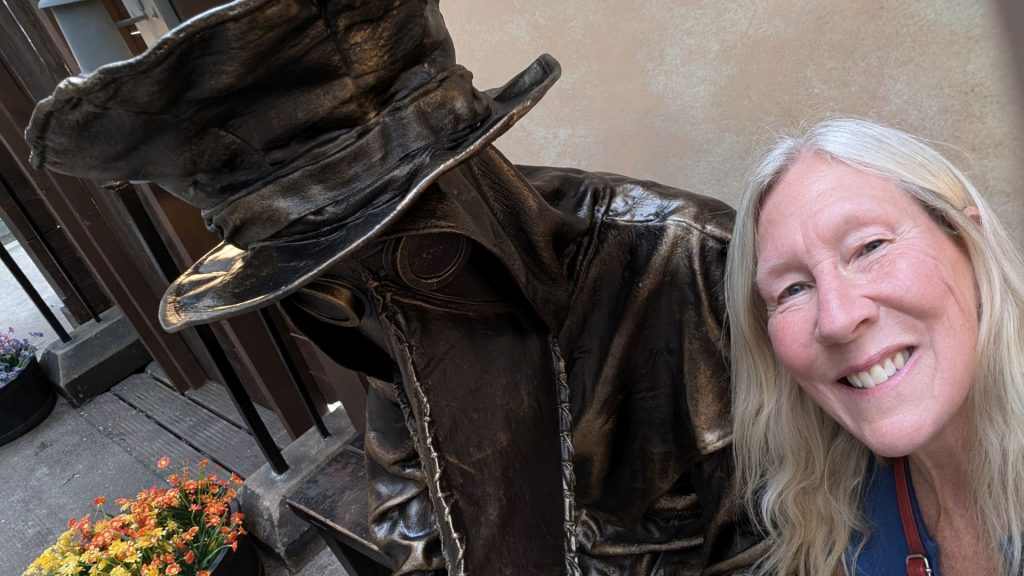
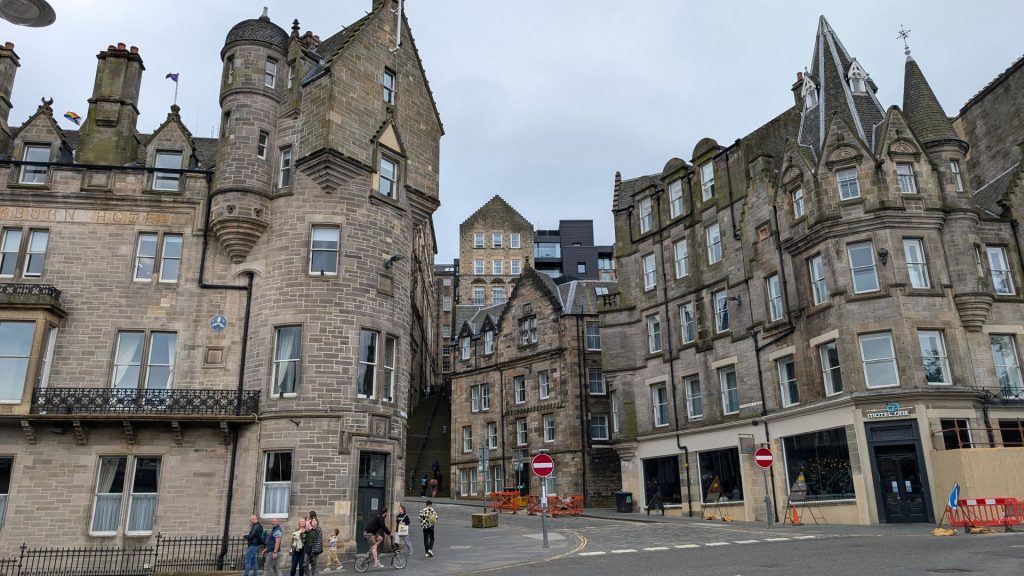
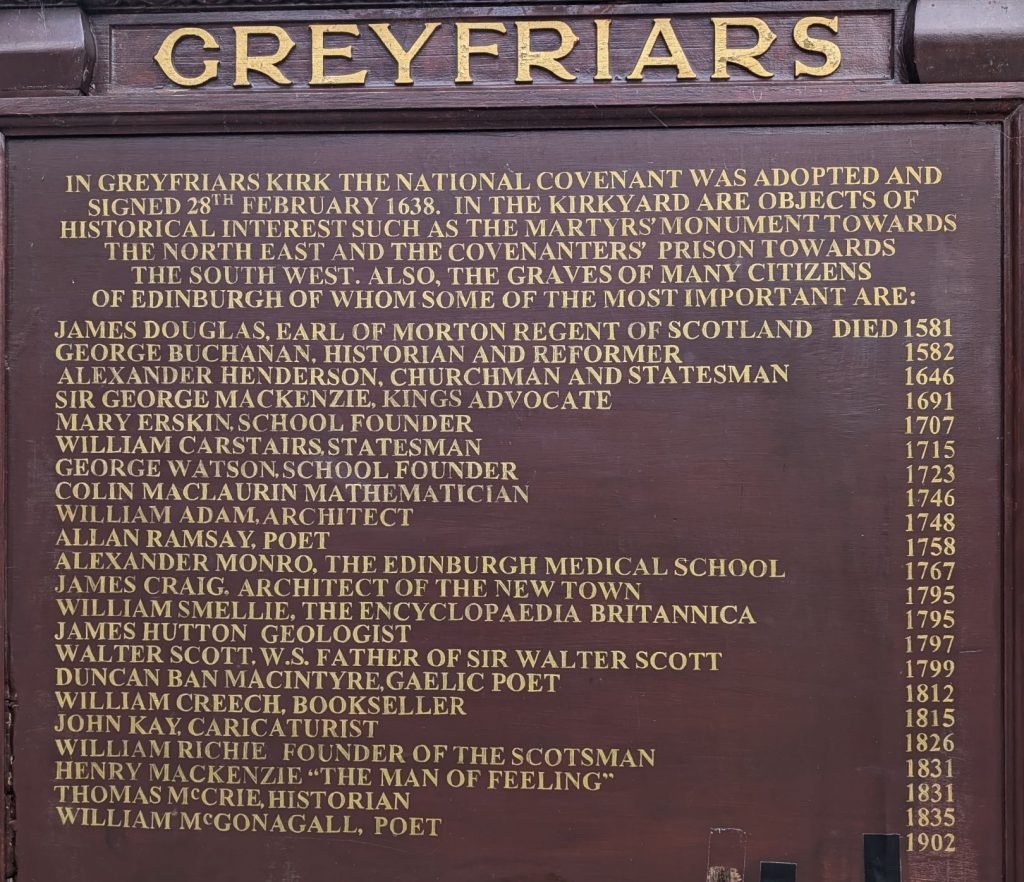
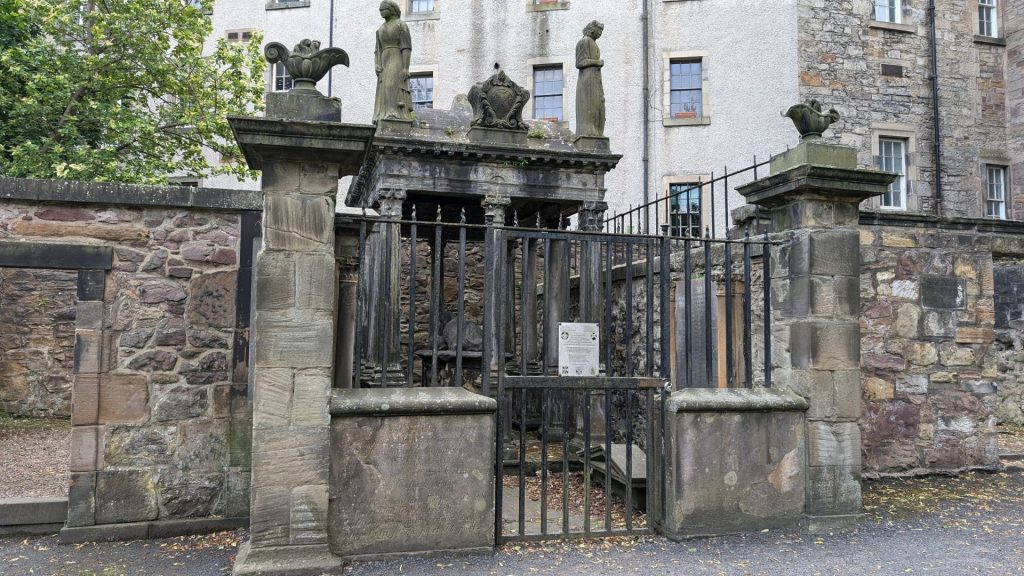
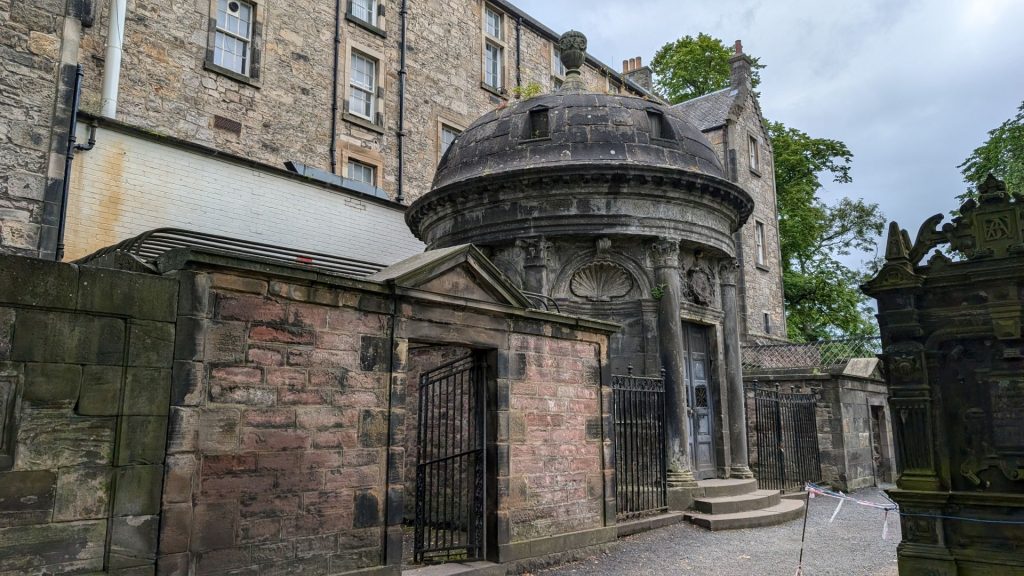
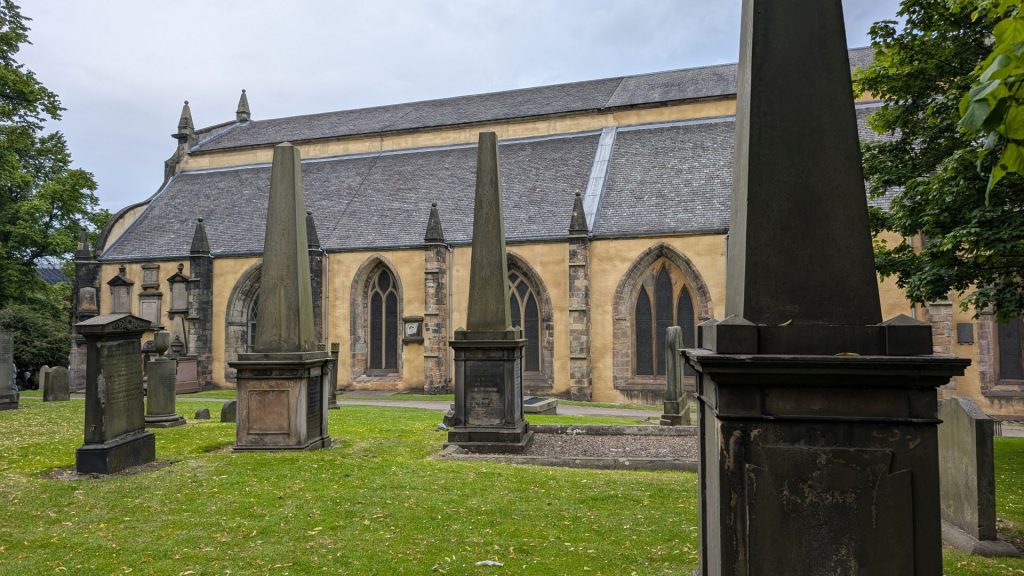
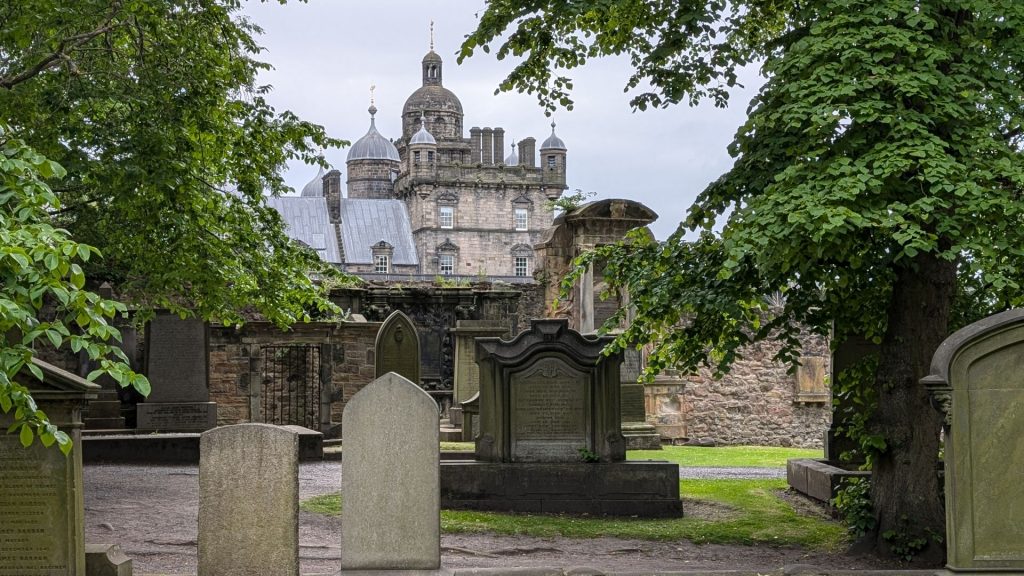
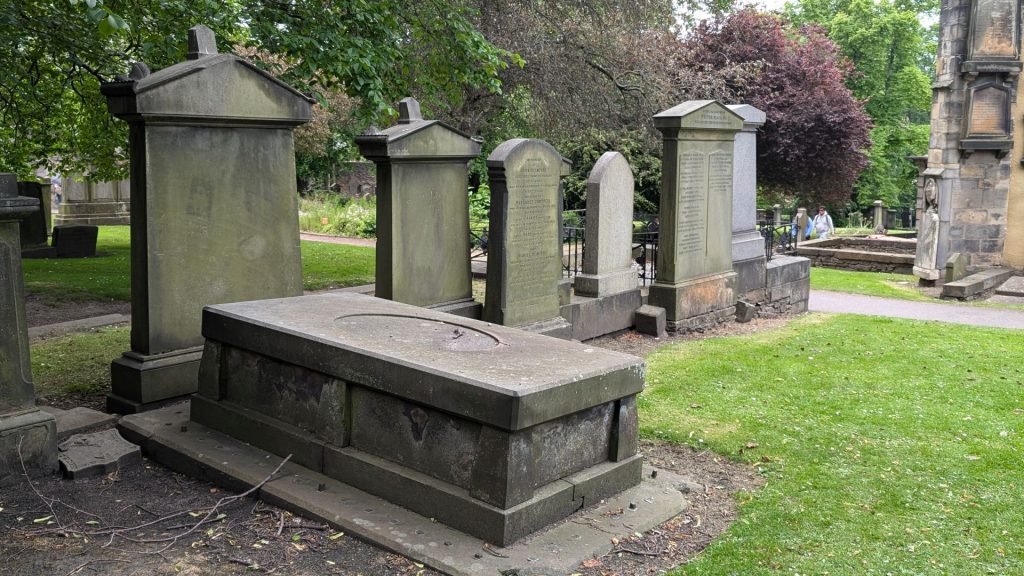
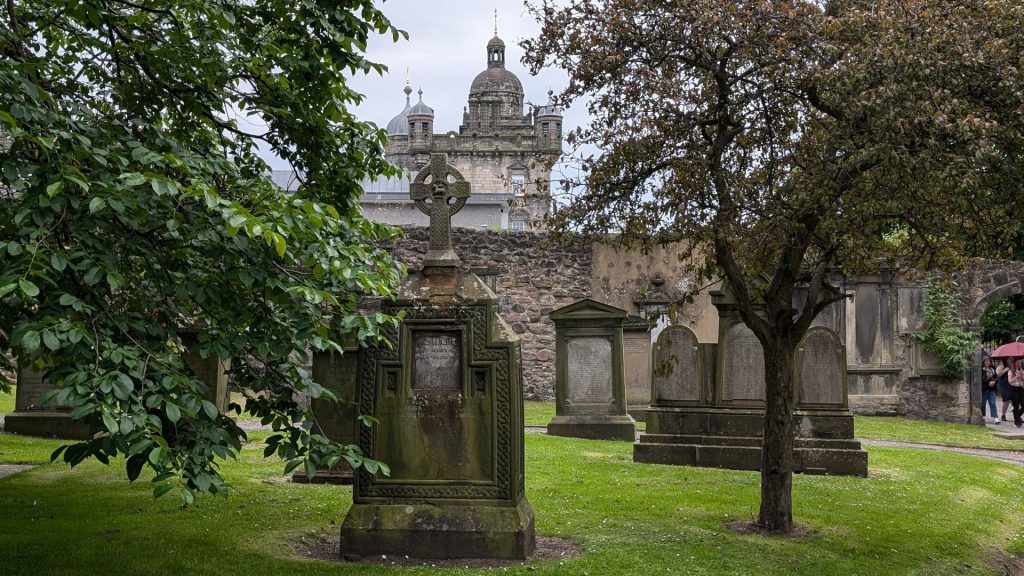
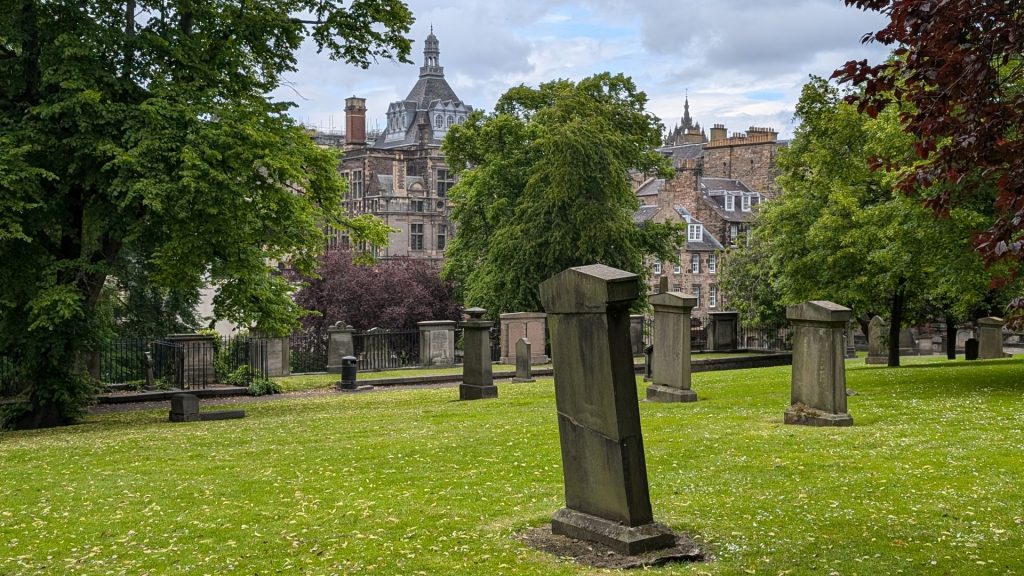
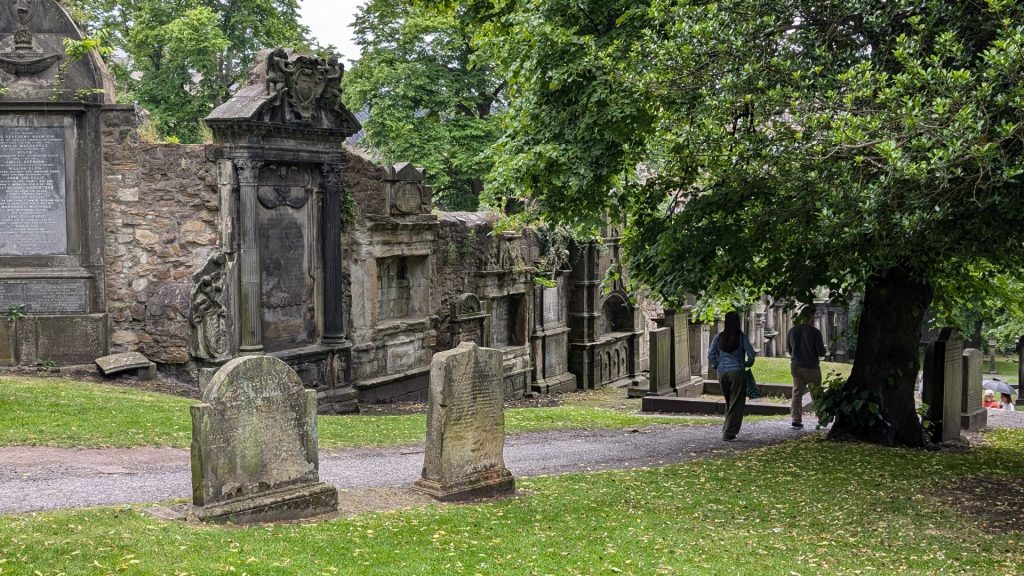
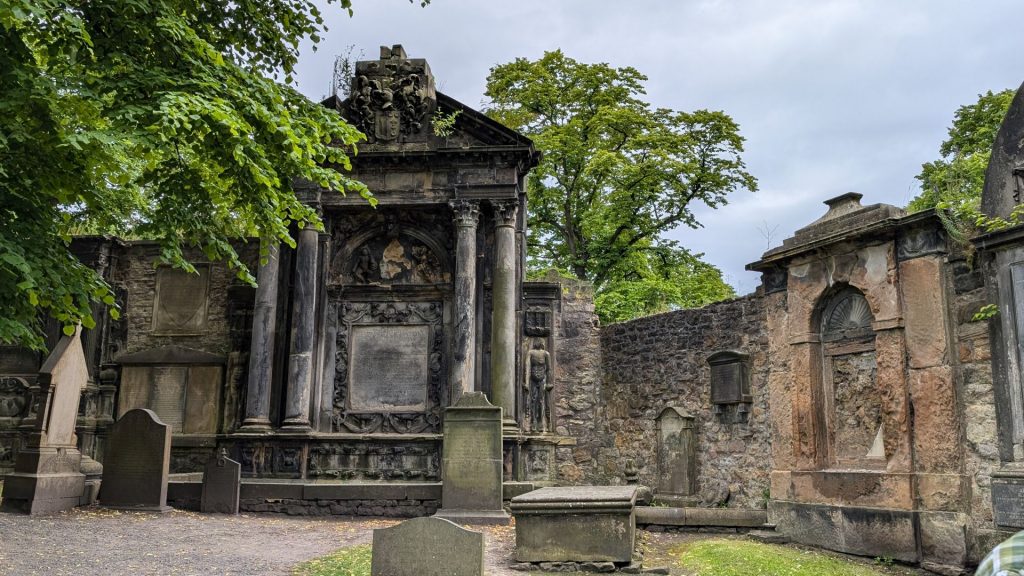
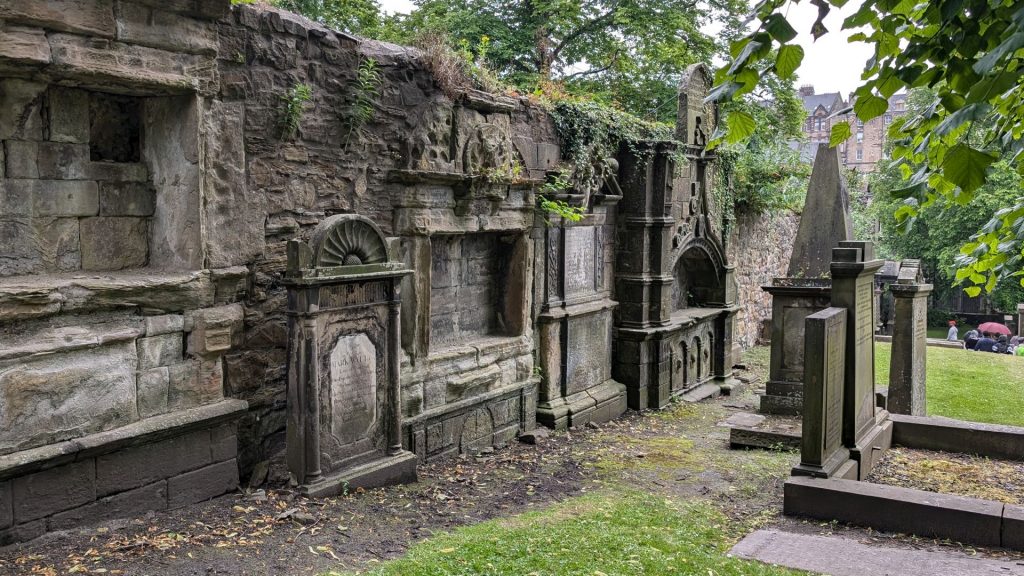
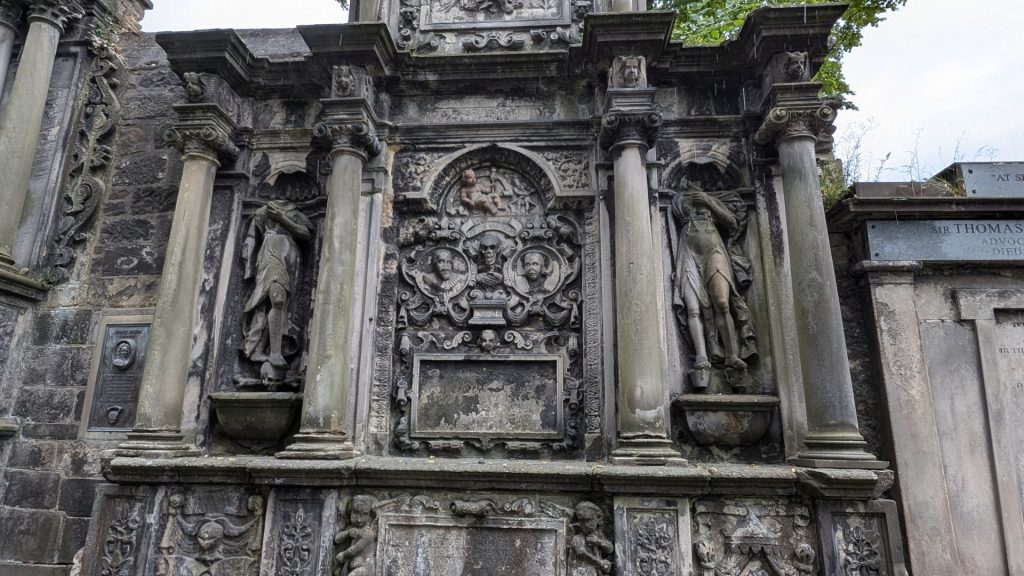
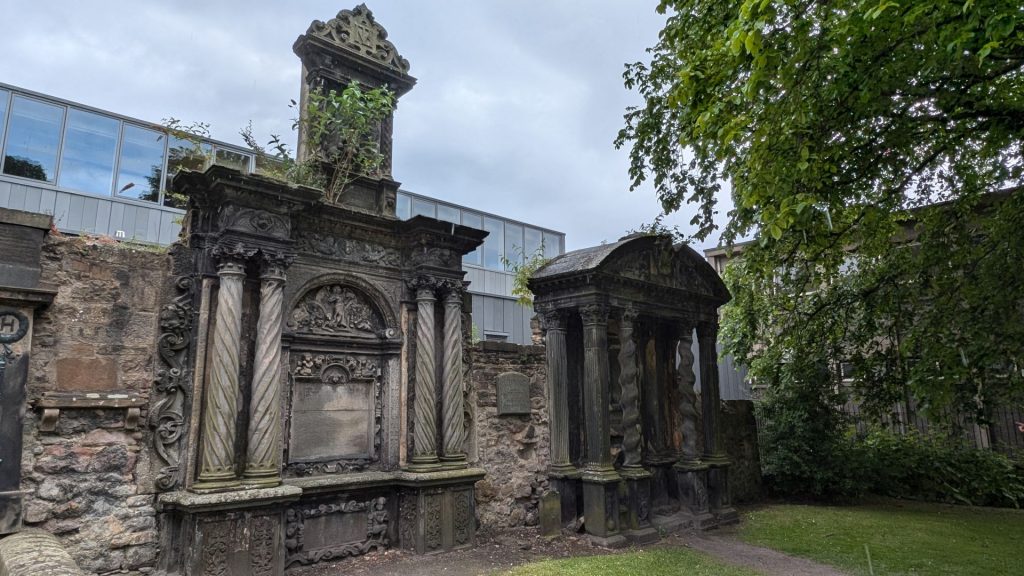
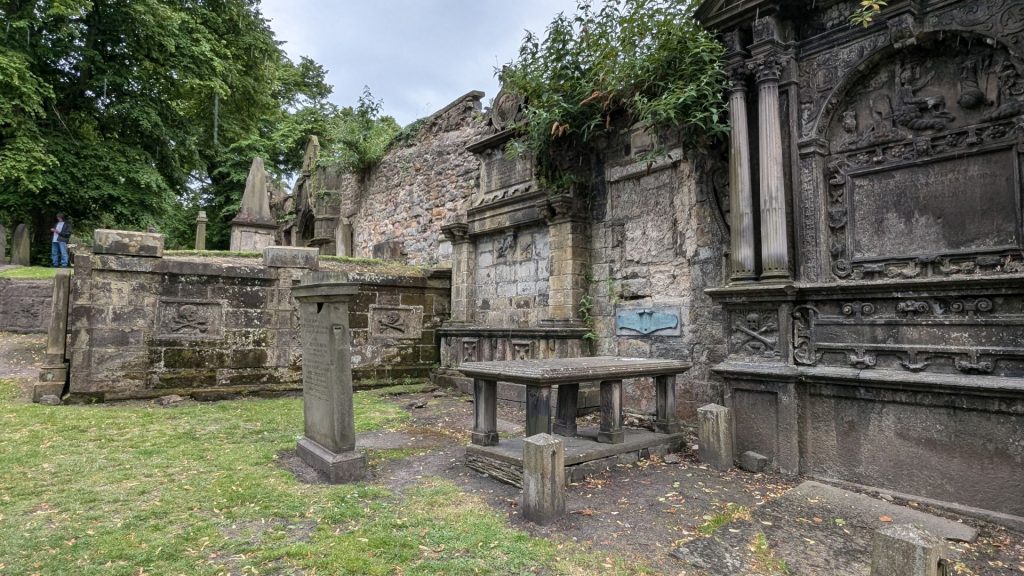
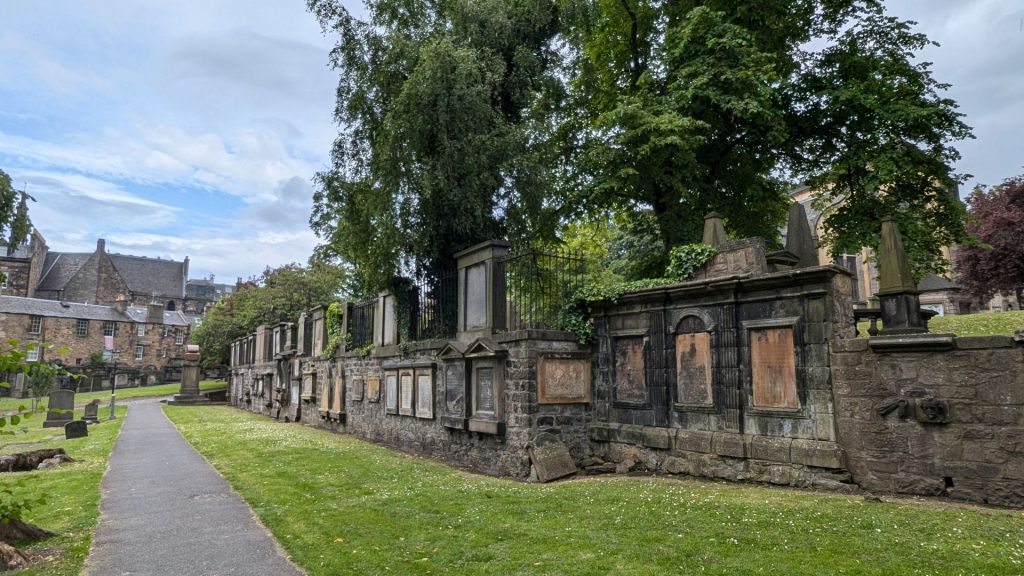
Victoria Street is Diagon Alley brought to life in the real world. This colorful, multilevel street is a sight to behold! Included is The Elephant House, made famous by the fact that JK Rowling wrote much of Harry Potter at the original Elephant House cafe (now closed due to a fire).
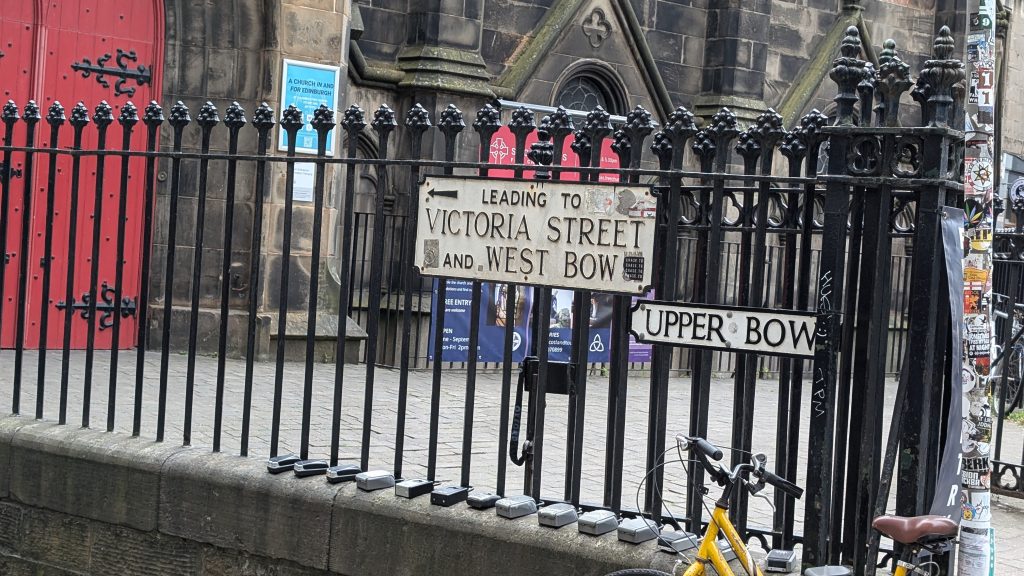
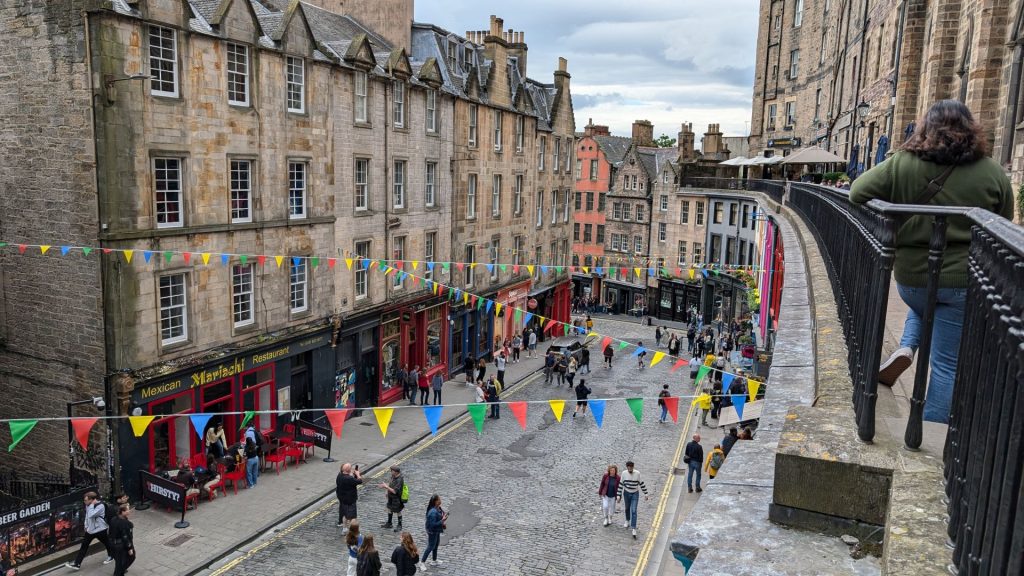
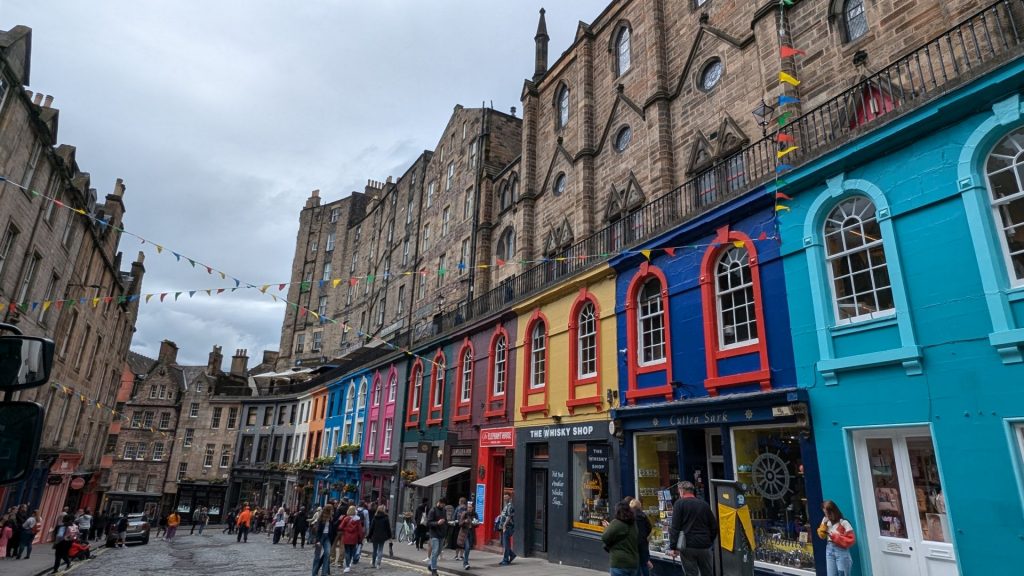
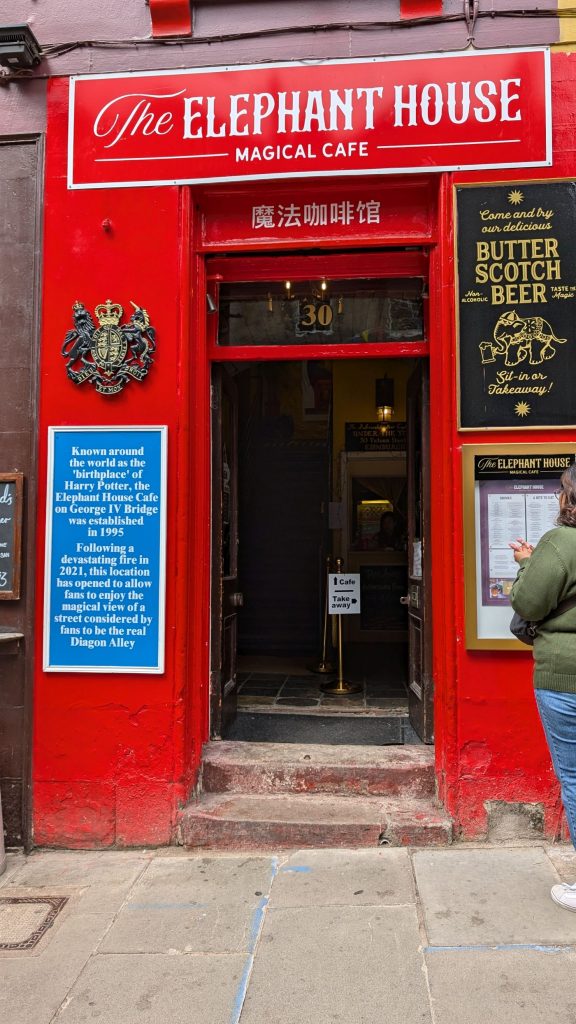
The Real Mary King’s Close
This was probably my favorite “attraction” in Edinburgh. The tour guides are in full costume and assume a role. Our guide was a 500-year-old maid.
Michael wasn’t super interested in attending, which turned out to be quite fortuitous, because they only had one ticket left for the tour that fit our schedule.
What can I tell you about The Real Mary King’s Close? Here’s what they say:
This is a fascinating opportunity to explore Edinburgh’s medieval underbelly. “Closes” are the narrow and serpentine alleys that branch off the Royal Mile. They were traditionally named after a notable resident or trade shared by several residents. The Real Mary King’s Close was named in 1630 after resident Mary King, who built her own fabric business after her husband died. It comprised several towering tenement buildings — some reaching seven stories. In 1760, the Close was partly destroyed and covered to make way for the construction of the Royal Exchange. It reopened as an attraction in 2003. The tour provides an intimate (and dark) look at life during the plague and those who called Mary King’s Close home in the 16th and 17th centuries.
I was not able to take pictures inside, so I just have a couple of exterior pictures and a picture of a Close. I don’t think this was even Mary King’s Close (I went down a few), but it is an example of one.
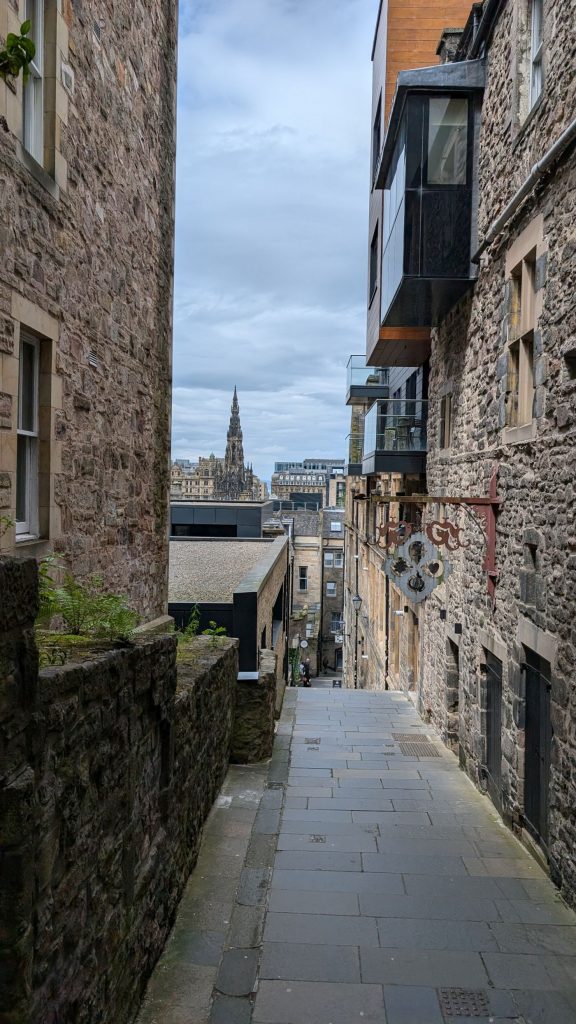
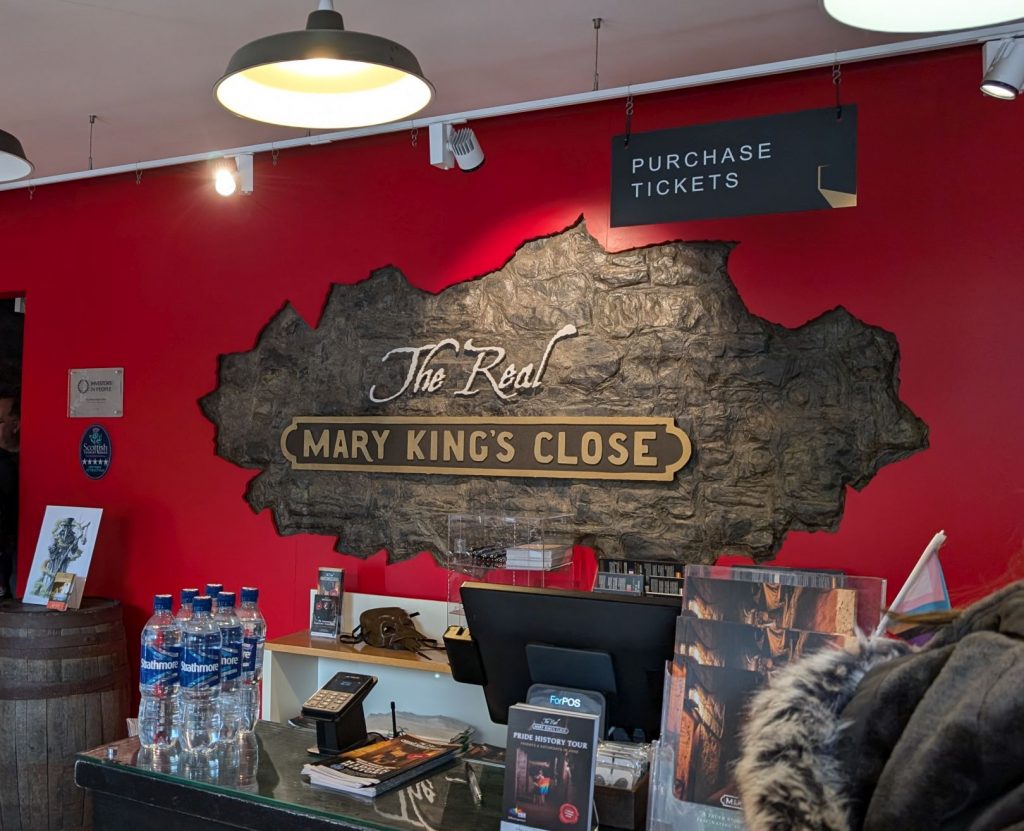
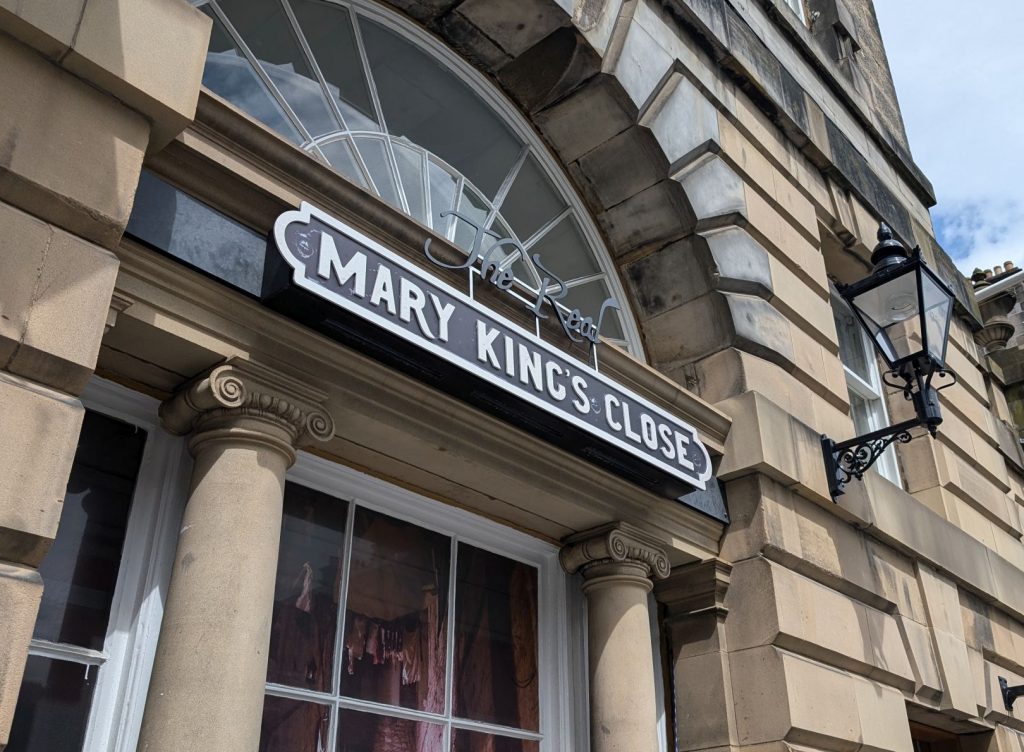
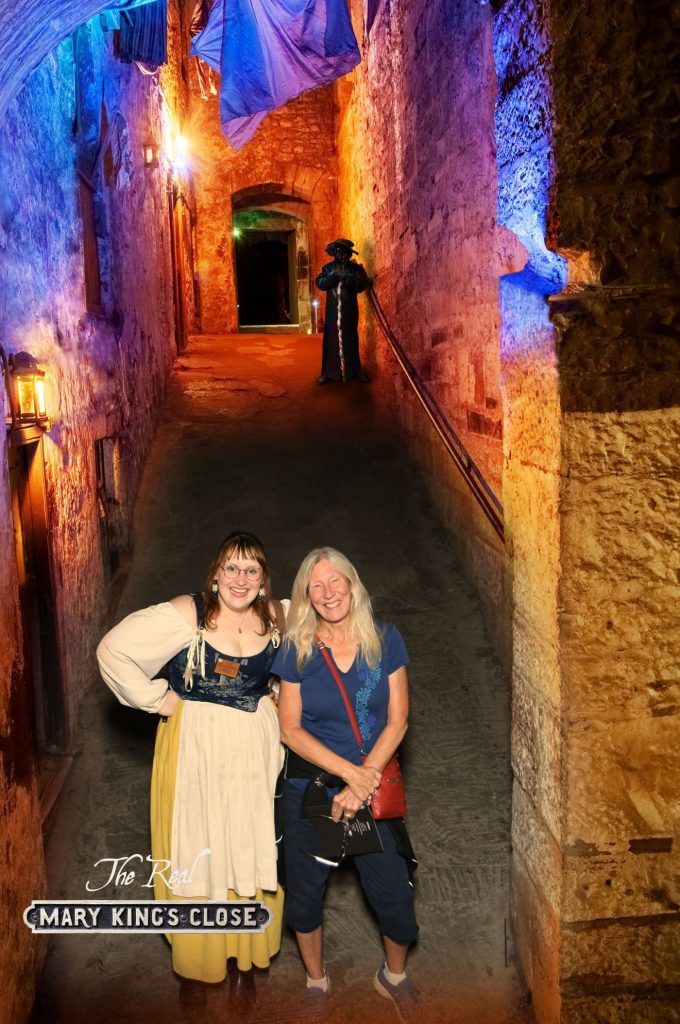
That’s it for Edinburgh. Of course, we also ate and drank at some good pubs. When in Scotland. . . !!
